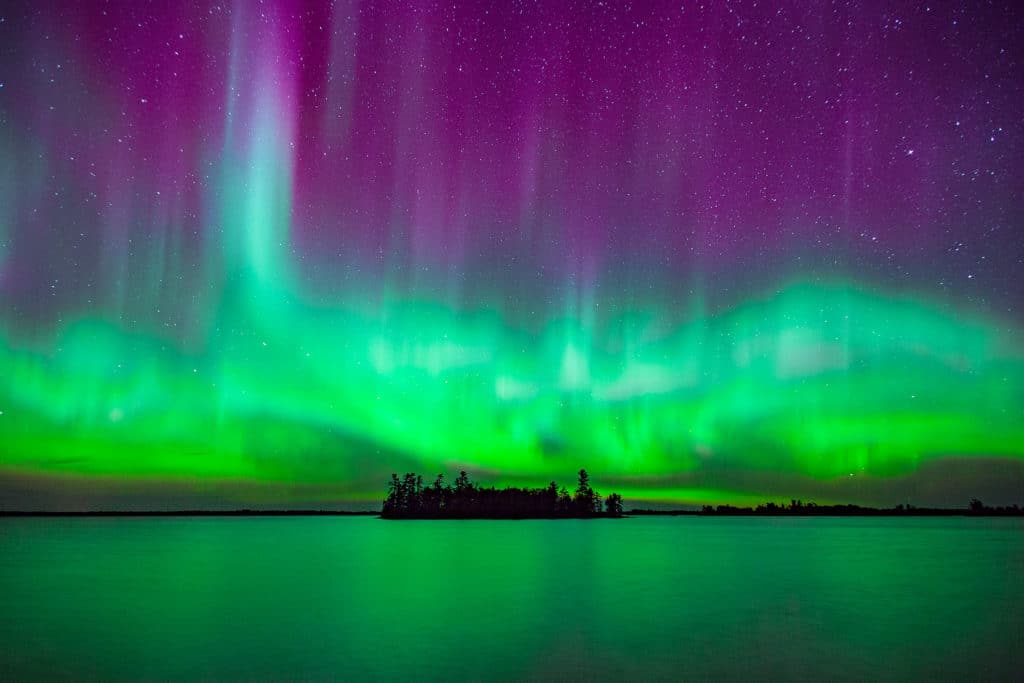
Article Summary: Minnesota Landmarks
Minnesota Landmarks. More Than Just Parks has 20 incredible must-see sites for you to visit.
There’s so much more to this exciting place than the Minnesota Vikings. In this article, we’ll familiarize you with the incredible landmarks located in the Land of 10,000 Lakes.
We’ve got incredible places, iconic memorials, fascinating museums, epic monuments and so much more.
We’re going to give you our list of the Top 20 Landmarks In Minnesota.
So, What Is A Landmark?
Well, it’s a place of “a special character or special historical or aesthetic interest or value as part of the development, heritage, or cultural characteristics of a city, state, or nation.”
Why visit these places? Because landmarks connect us to the past. Through visiting these wonderful places where history occurred we find our roots. It allows us to feel like we are a part of something much bigger than ourselves.
And, speaking of history, did I mention that I taught the subject? I spent a lifetime teaching about the history behind many of these amazing sites. Then I got to see them firsthand. And now I’m sharing the fascinating stories of these places with you. It doesn’t get any better than that!
So, without further ado, let’s dive in.
Table of Contents: Minnesota Landmarks
Minnesota Landmarks
Some Fascinating Facts About Minnesota
Here are some fascinating facts about Minnesota:
- Land of 10,000 Lakes: Minnesota is known as the “Land of 10,000 Lakes” because it is home to more than 11,800 lakes. These lakes, along with numerous rivers and streams, cover about 8% of the state’s total area.
- Boundary Waters Canoe Area Wilderness: Located in the northern part of Minnesota, the Boundary Waters Canoe Area Wilderness is a pristine wilderness area spanning over a million acres. It offers stunning natural beauty, including lakes, forests, and abundant wildlife, and is a popular destination for canoeing, fishing, and camping.
- The Mall of America: Located in Bloomington, Minnesota, the Mall of America is the largest mall in the United States. It covers an area of 2.8 million square feet and features over 500 stores, a theme park called Nickelodeon Universe, an aquarium called SEA LIFE Minnesota, and numerous other attractions.
- The Mayo Clinic: The Mayo Clinic, a world-renowned medical institution, is headquartered in Rochester, Minnesota. It is one of the largest and most prestigious medical facilities in the world, known for its cutting-edge research, patient care, and medical education.
- Scandinavian Heritage: Minnesota has a strong Scandinavian heritage, with a significant number of residents claiming Norwegian, Swedish, Danish, Finnish, and Icelandic ancestry. This heritage is reflected in various cultural events, museums, and festivals throughout the state.
- The State Fair: The Minnesota State Fair, held annually in St. Paul, is one of the largest and most popular state fairs in the United States. It attracts millions of visitors each year and features a wide range of attractions, including agricultural exhibits, live entertainment, amusement rides, and an incredible variety of food options.
- Twin Cities: Minnesota’s two largest cities, Minneapolis and St. Paul, are known as the “Twin Cities.” Despite being neighboring cities, they have distinct personalities and cultural offerings. Minneapolis is known for its vibrant arts scene, music, and skyscrapers, while St. Paul is known for its historic charm, government institutions, and the Cathedral of St. Paul.
- Legendary Music Scene: Minnesota has a rich music scene and has produced many renowned musicians, including Prince, Bob Dylan, and The Replacements. The state continues to nurture a thriving music community, with a wide variety of genres and venues catering to music lovers.
- Ice Hockey: Minnesota is considered the “State of Hockey” due to its passion for the sport. The state has produced numerous NHL players, and high school hockey is particularly popular, with intense rivalries and a strong tradition of excellence.
- Natural Wonders: Minnesota boasts beautiful natural wonders such as the North Shore of Lake Superior, with its stunning cliffs and waterfalls, and the picturesque Mississippi River, which flows through the state and offers opportunities for boating, fishing, and scenic hikes.
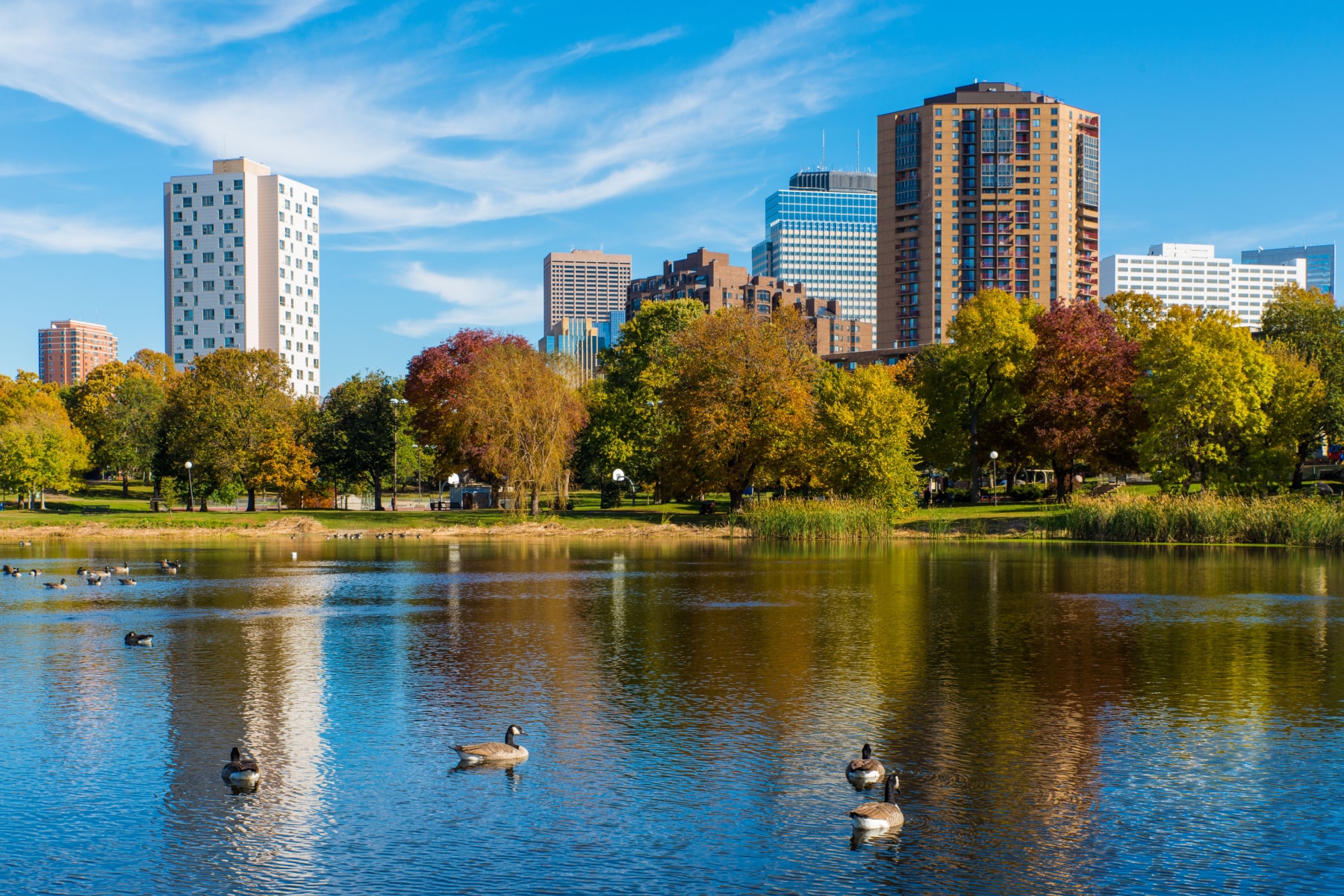
Top 20 Minnesota Landmarks
20. Minnesota State Capitol
More Than Just Parks kicks off its list of the Top 20 Minnesota Landmarks at #20 with the Minnesota State Capitol.
Prior to the current Capitol, Minnesota had three previous buildings used as the seat of government. The first territorial Capitol was built in 1853 in the city of St. Paul, but it was destroyed by fire in 1854. A second Capitol was constructed but was deemed inadequate, leading to the construction of a third Capitol building in 1883.
In 1893, the state government decided to construct a new and grander Capitol to accommodate its growing needs. A competition was held to design the new building, and architect Cass Gilbert’s design was selected. Construction began in 1896, and the building was completed in 1905 at a cost of approximately $4.5 million.

An Architectural Masterpiece
The Minnesota State Capitol is an architectural masterpiece, combining elements of the Beaux-Arts and Classical Revival styles. It features a magnificent dome that reaches a height of 223 feet, making it one of the tallest state capitol domes in the United States. The exterior is made of white Georgia marble, and the interior is adorned with intricate carvings, murals, and decorative artwork.
The Capitol has witnessed significant events throughout Minnesota’s history. In 1925, the body of former U.S. Vice President and Minnesota Senator Hubert H. Humphrey lay in state at the Capitol after his death. It has also been the site of numerous political rallies, protests, and important legislative decisions that have shaped the state.
Over the years, the Capitol underwent several restoration and renovation projects to preserve its architectural integrity and address maintenance needs.
A Major Restoration Project
In the 2010s, a major comprehensive restoration project was undertaken to address structural issues, modernize infrastructure, and restore the building to its original splendor. The project, completed in 2017, involved extensive work on the exterior, interior spaces, artwork, and mechanical systems.
The Capitol is open to the public and offers guided tours that provide visitors with a glimpse into the state’s history, art, and government. The building houses various offices and chambers, including the House of Representatives, the Senate, the Governor’s Office, and the Supreme Court.
The Capitol grounds also feature monuments, statues, and memorials that honor Minnesota’s veterans and historical figures.

19. Mill City Museum
Our next Minnesota landmark is an architectural showpiece, rising eight stories within the limestone ruins of the Washburn A Mill, a National Historic Landmark, which nestled on a beautiful riverfront. At #19 on our list of the Best Minnesota Landmarks is the Mill City Museum.
The museum is situated on the historic site of the Washburn “A” Mill, which was once the largest flour mill in the world. The mill was built in the 1870s by Cadwallader C. Washburn and his business partners, and it played a crucial role in Minneapolis becoming known as the “Flour Milling Capital of the World.”
In 1878, a catastrophic fire destroyed the original mill. However, the mill was reconstructed, and the building that remains today showcases the ruins of the fire-damaged portion as a key architectural feature. The mill continued to operate until 1965 when it closed its doors.
In the early 1990s, plans were made to convert the historic mill ruins into a museum. The Mill City Museum officially opened its doors in 2003, after extensive restoration and renovation efforts. The design of the museum incorporates the remnants of the mill, preserving its industrial character.
The Museum Offers A Wide Range Of Exhibits
The museum offers a range of exhibits that explore the history, technology, and cultural impact of flour milling. Visitors can learn about the advancements in milling technology, the impact of the industry on the growth of Minneapolis, and the stories of the mill workers. The exhibits feature artifacts, interactive displays, multimedia presentations, and historical photographs.
One of the highlights of the museum is the Flour Tower elevator show. Visitors step into an old grain elevator and are taken on a virtual tour through the history of the mill. The multi-sensory experience uses sound, lighting, and visual effects to transport visitors back in time and provide a glimpse into the milling process.
The museum also includes a Baking Lab where visitors can participate in hands-on baking activities and learn about the science and art of flour-based products. The Baking Lab hosts regular baking demonstrations, allowing visitors to see skilled bakers in action and sample their creations.
It features an observation deck on the eighth floor that provides stunning views of the Mississippi River, the Stone Arch Bridge, and the surrounding area. The observation deck is a great vantage point to appreciate the historical and natural beauty of the region.
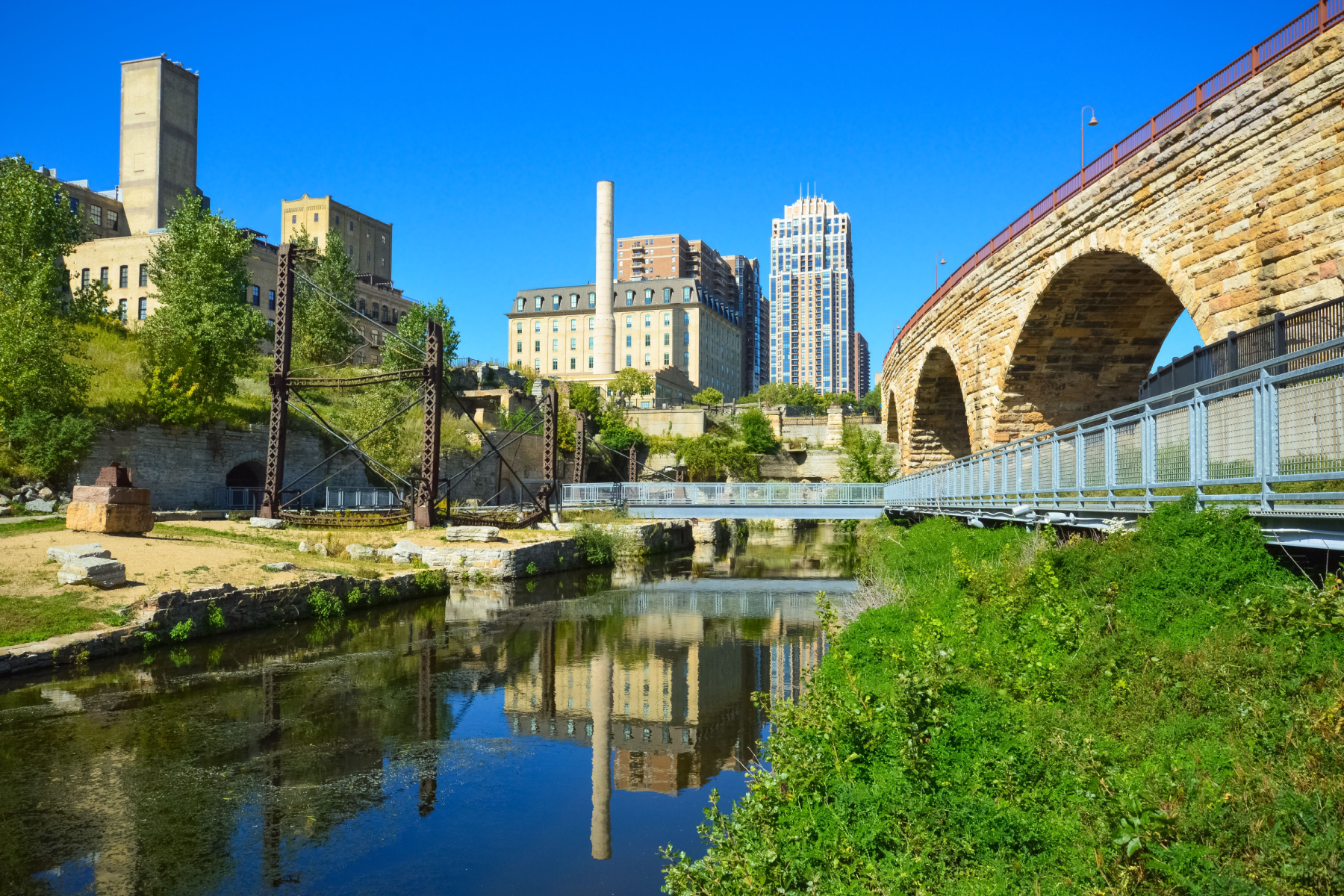
18. Stone Arch Bridge
Our next Minnesota landmark offers a panoramic view of St Anthony Falls and is recognized as a National Civil Engineering Landmark. At #18 on our list of the Best Minnesota Landmarks is the Stone Arch Bridge.
The Stone Arch Bridge was constructed between 1881 and 1883 by the Great Northern Railway under the supervision of engineer James J. Hill. It was built primarily to serve as a railroad bridge, connecting the east and west banks of the Mississippi River. The bridge was made entirely of native granite and limestone, giving it its distinctive appearance. It officially opened for rail traffic on June 23, 1883.
During its early years, the Stone Arch Bridge served as a vital transportation link, facilitating the movement of goods and passengers across the river. The bridge played a significant role in the expansion of the Great Northern Railway and helped establish Minneapolis as a major transportation hub in the region.
With the decline of rail traffic in the mid-20th century, the Stone Arch Bridge lost its utility and fell into disrepair. By the 1970s, the bridge was considered obsolete, and plans were made to demolish it.
In the 1980s, preservation efforts were initiated to save the Stone Arch Bridge from demolition. The Minneapolis community rallied together to recognize the historical and architectural significance of the bridge. Eventually, the bridge was added to the National Register of Historic Places in 1971 and listed as a National Historic Civil Engineering Landmark in 1989.

17. William A Irvin Museum
Our next Minnesota landmark is located in the heart of Canal Park. Set against the majestic Aerial Lift Bridge, is the William A. Irvin Museum which is #17 on our list of the Best Minnesota Landmarks. But this is no ordinary museum. Rather, it’s an historic ship with quite a story to tell.
The William A. Irvin was built in 1937 by the American Shipbuilding Company in Lorain, Ohio. It was originally constructed as a bulk carrier for the United States Steel Corporation and was named after the company’s then-president, William Irvin. The ship was primarily used to transport iron ore and other cargo across the Great Lakes.
The William A. Irvin served as a working vessel for the United States Steel Corporation for several decades. It operated on the Great Lakes, transporting iron ore from mines in northern Minnesota to steel mills in various locations. The ship played a crucial role in the region’s industrial and economic development during this time.
In 1978, after more than 40 years of service, the William A. Irvin was retired from active duty. The ship was docked permanently in Duluth, Minnesota, and plans were made to convert it into a museum and tourist attraction.
In 1986, the William A. Irvin opened its doors as a floating museum. The ship was restored and transformed into a museum that offered visitors a glimpse into the maritime history of the Great Lakes and the life of sailors on board such vessels. The museum features exhibits that showcase the ship’s operational equipment, crew quarters, and cargo holds.

The William A. Irvin Museum | Photo Courtesy of Wikimedia Commons
16. James J. Hill House
Our next Minnesota landmark is a 36,000-square-foot Gilded Age mansion was once the largest private residence in the state. At #16 on our list of the Best Minnesota Landmarks is the James J. Hill House.
The James J. Hill House is located in St. Paul, Minnesota. It was built between 1891 and 1892 for James J. Hill, a prominent businessman and railroad executive who was one of the wealthiest and most powerful men in the United States during the Gilded Age.
The home was designed by architect Clarence H. Johnston, Sr. and was known for its grand scale, fine craftsmanship, and advanced technological systems.
The James J. Hill House is a significant example of the French Renaissance Revival architectural style and is considered one of the most important and well-preserved homes of the Gilded Age.
It features a three-story stone and brick structure, with a steeply pitched slate roof, dormers, and a central tower. The interior is richly detailed, with intricate woodcarvings, ornate plasterwork, and intricate mechanical systems.
After the death of James J. Hill in 1916, the home was occupied by his family until the 1940s, when it was donated to the Minnesota Historical Society. The house was opened to the public as a museum in 1978 and has been open for tours since.

James J. Hill House | Photo Courtesy of Wikimedia Commons
Top 15 Minnesota Landmarks
15. Rabideau CCC Camp
We’re on to our Top 15 Minnesota Landmarks and at #15 is a place which was part of one of America’s most successful programs. It’s the Rabideau CCC Camp.
The Rabideau CCC Camp is a historic site that was used as a Civilian Conservation Corps (CCC) camp during the Great Depression in the 1930s.
The CCC was a federal program established in 1933 as part of the New Deal that employed young men to carry out conservation and development projects on public lands. It was located in the Chippewa National Forest in northern Minnesota, and was one of the many CCC camps that were established across the United States during this period.
The camp at Rabideau was established in 1933 and operated until 1942, and was used to provide work and training to young men from the area.
The camp consisted of several buildings, including barracks, a mess hall, administrative buildings, and a recreation hall. The CCC workers at the camp were involved in a variety of projects, including planting trees, building trails and roads, and fighting forest fires.
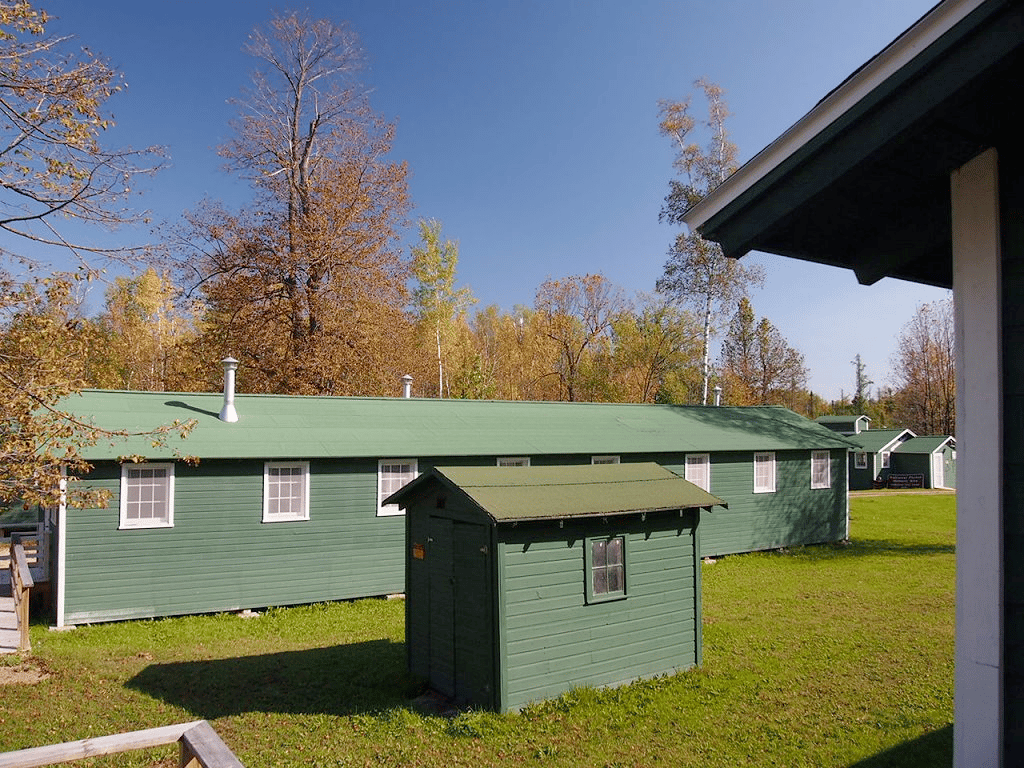
A National Historic Landmark
The camp was designated a National Historic Landmark in 1992 for its well-preserved condition, it is one of the best-preserved CCC camps in the country. Today, the camp serves as an educational center, where visitors can learn about the history of the CCC and the work that was done at the camp.
It is currently owned by the Chippewa National Forest, which uses the camp to provide educational opportunities and interpretive information to visitors. The camp is open to the public during the summer months, and it offers tours, exhibits, and other programs to help visitors learn about the camp’s history and the legacy of the CCC.
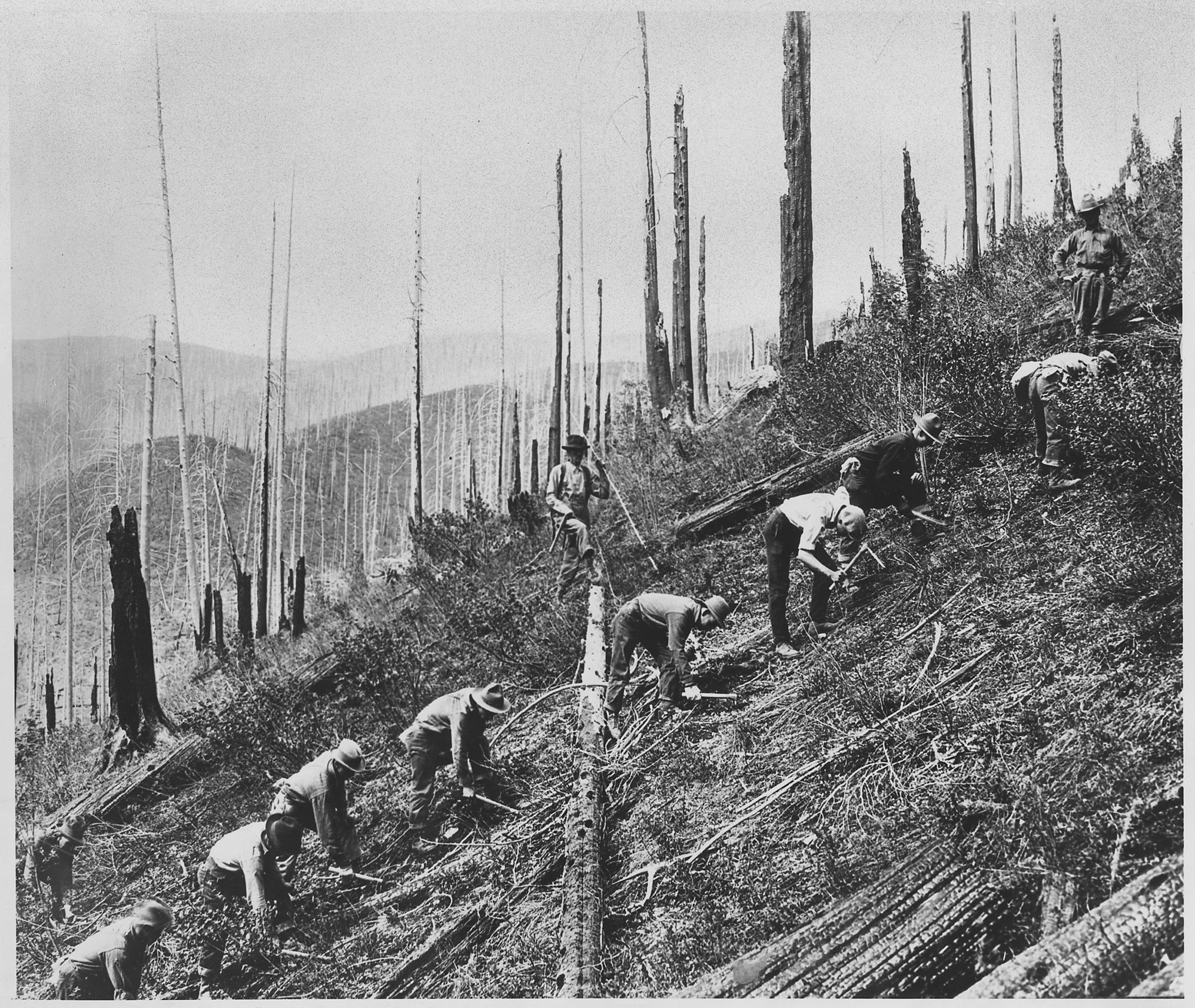
14. Charles A. Lindbergh House
Our next Minnesota landmark celebrates one of the greatest aviators of all time. Welcome to the Charles A. Lindbergh House.
It’s the childhood home of Charles A. Lindbergh is located in Little Falls, Minnesota.
Charles A. Lindbergh was an American aviator, inventor, and environmental activist who is best known for his historic solo flight across the Atlantic Ocean in 1927. He was born in Detroit, Michigan in 1902, but his family moved to Little Falls when he was a child.
The Lindbergh family home is a two-story, Victorian-style house that was built in 1906. The home is now a museum, and visitors can take a tour to see where Lindbergh grew up and learn about his early life.
The museum features exhibits that highlight Lindbergh’s childhood, including photographs, artifacts, and personal items that belonged to the family.
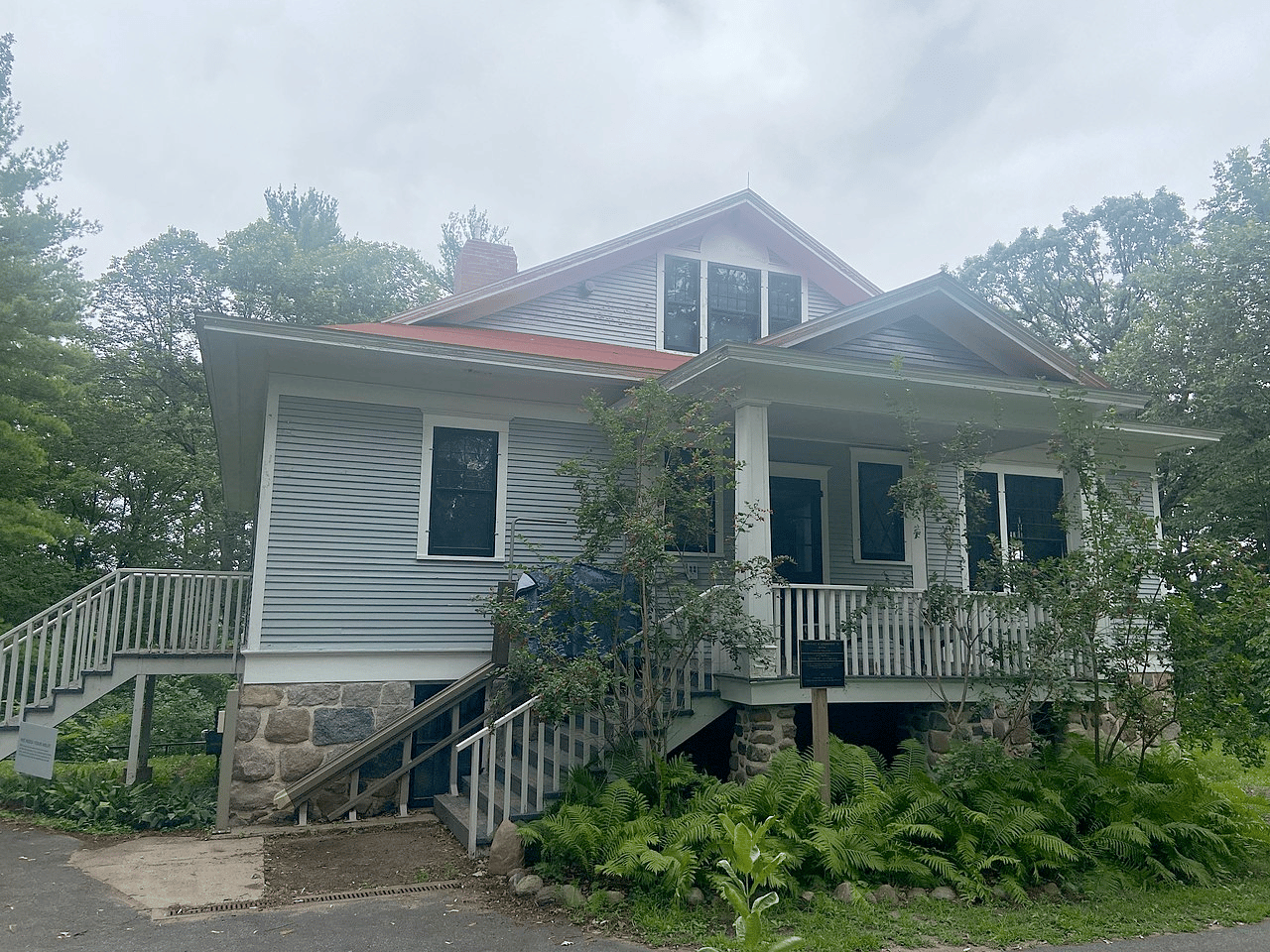
Learn About Lindbergh’s Experiences In Little Falls
The museum also explores how Lindbergh’s experiences in Little Falls and his time spent on the Mississippi River shaped his character and influenced his later life. Lindbergh had a deep appreciation for nature, and his experiences living on the river likely contributed to his later work as an environmental activist.
The museum includes exhibits on his famous flight across the Atlantic, his inventions, and his environmental activism, which are displayed throughout the home. Visitors can also take a tour of the house and learn about the Lindbergh family’s life and Charles’s early experiences.
The Charles A. Lindbergh Historic Site is open seasonally, usually from May through October, and offers guided tours of the house, an interactive exhibit, and an audio-visual presentation about Charles Lindbergh’s life.
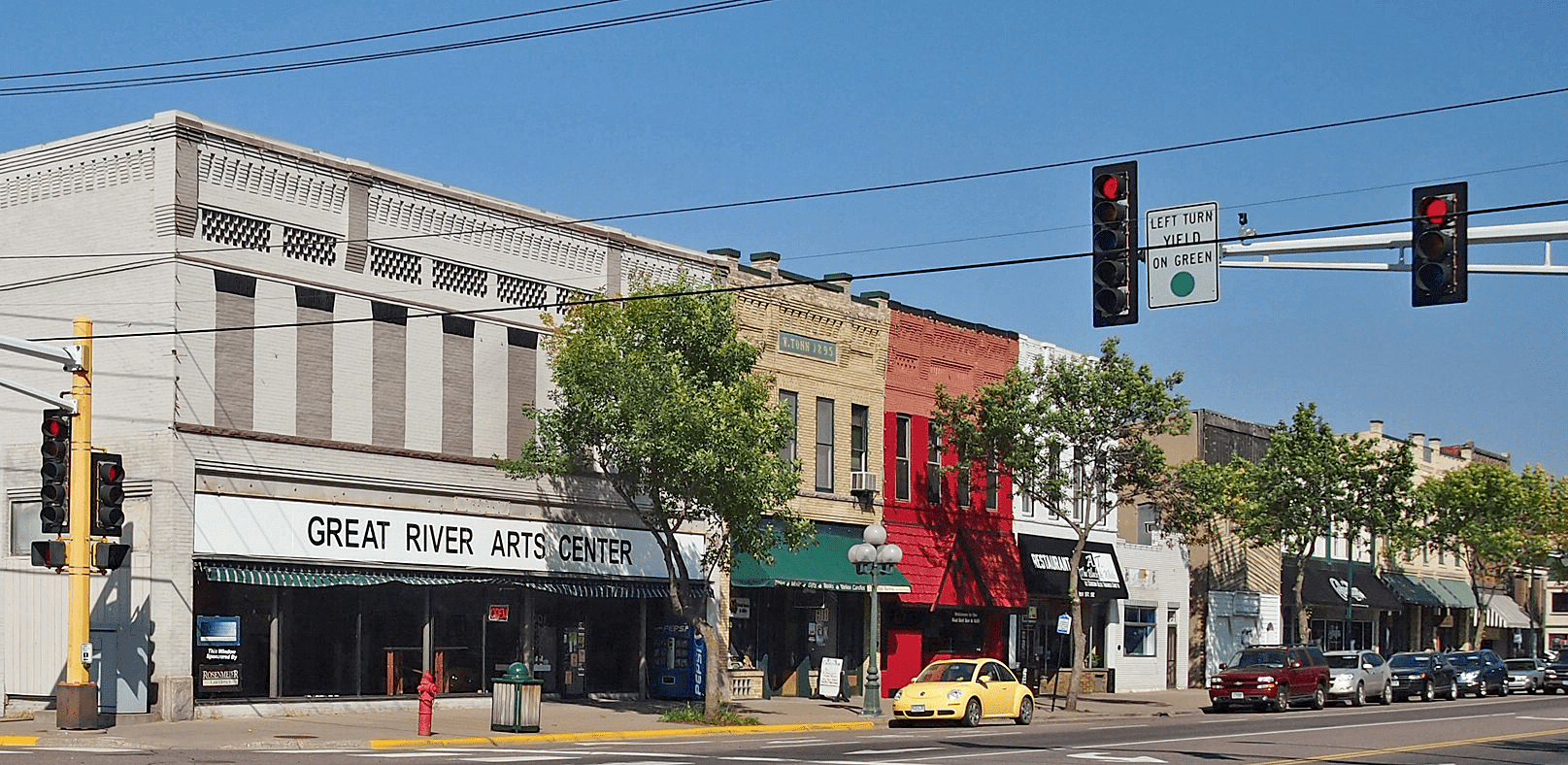
13. Mayo Clinic
Our next Minnesota landmark is considered by some to be the “Best Hospital In The World.” At #13 on our list of the Best Minnesota Landmarks is the Mayo Clinic.
The Mayo Clinic traces its roots to the 1880s when Dr. William Worrall Mayo, a British immigrant and physician, settled in Rochester, Minnesota. In 1883, Dr. Mayo joined forces with his sons, Dr. William James Mayo and Dr. Charles Horace Mayo, to establish a private medical practice known as “W.W. Mayo and Sons.” The clinic gained recognition for its collaborative and innovative approach to medicine.
The Mayo Clinic gradually expanded its operations, attracting talented physicians and surgeons. The institution gained a reputation for providing exceptional patient care and pioneering medical advancements. It embraced a patient-centered approach, emphasizing teamwork, collaboration, and the integration of medical specialties.
In 1919, the Mayo brothers and their colleagues created the Mayo Foundation for Medical Education and Research. The foundation formalized the educational and research activities of the Mayo Clinic and became the governing body for the institution. It ensured the sustainability and continued growth of the Mayo Clinic while fostering medical education and scientific research.
Throughout its history, it has made significant contributions to various medical specialties, including surgery, cardiology, endocrinology, and oncology. The institution has pioneered new surgical techniques, developed lifesaving medical devices, and conducted groundbreaking research studies.

Take A Guided Tour
Guided tours of the Mayo Clinic are available for visitors who are interested in exploring the institution. However, it’s important to note that the availability and specific details of the tours may vary, and it’s advisable to check with the Mayo Clinic’s visitor center or website for the most up-to-date information.
The guided tours typically provide an opportunity to learn about the history, mission, and values of the Mayo Clinic, as well as its medical advancements and patient-centered approach. Knowledgeable guides lead visitors through selected areas of the clinic, sharing insights about the facilities, technologies, and medical specialties.
During the tour, you may have the chance to see iconic locations within the clinic, such as the Gonda Building, which houses various outpatient clinics, and the Mayo Clinic Heritage Hall, where the history and legacy of the institution are showcased. Additionally, you might visit educational and research facilities, surgical suites, and patient care areas, gaining a glimpse into the comprehensive medical services provided by the Mayo Clinic.
To ensure availability and to obtain specific details about tour schedules, reservation requirements, and any restrictions, it’s recommended to contact the Mayo Clinic’s visitor center or check their official website. They will provide you with accurate and up-to-date information regarding the tour options available at the time of your visit.

Mayo Clinic | Courtesy of Wikimedia Commons
12. F. Scott Fitzgerald House
Next up on our list of the Best Minnesota Landmarks is a place which celebrates a literary icon of the Jazz Age. At #12 on our list is the F. Scott Fitzgerald House.
The F. Scott Fitzgerald House, also known as Summit Terrace, is located at 599 Summit Avenue in Saint Paul, Minnesota. It is part of a group of row houses designed by architects William H. Willcox and Clarence H. Johnston Sr. and is listed as a National Historic Landmark for its association with the famous author F. Scott Fitzgerald.
The style of the houses is described as “New York Style” in which each unit has a distinctive character found in some row houses in eastern cities.
The Fitzgerald house is faced with brownstone, is two bays wide, and has a polygonal two-story window bay on the right and the entrance, recessed under a round arch that is flush with the bay front, on the left. The mansard roof has a cross-gable with two round-arch windows and decorative finials.
Architecture critic Larry Millett describes it as “A brownstone row house that leaves no Victorian style unaccounted for, although the general flavor is Romanesque Revival.”
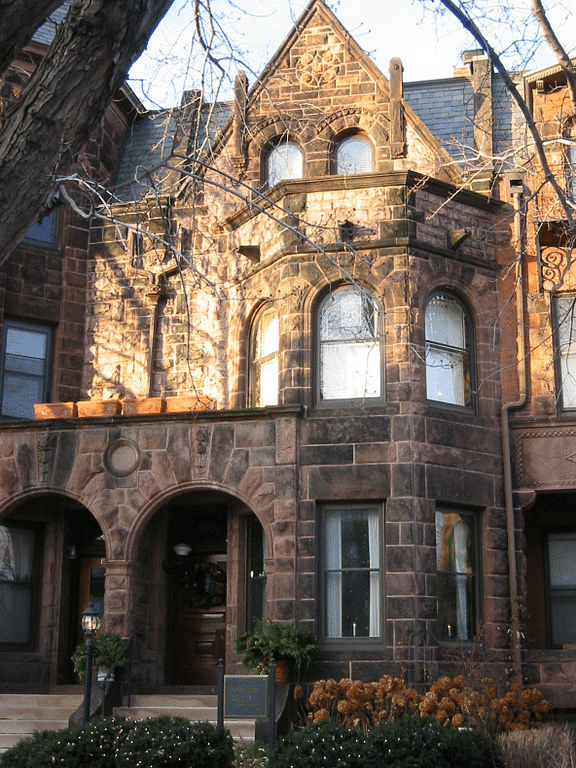
11. Split Rock Lighthouse
Our next Minnesota landmark is located on a 130-foot cliff on the rocky coast of Lake Superior. It’s an intact 1910 light station that guided ships across the often stormy waters of western Lake Superior. At #11 on our list of the Best Minnesota Landmarks is the Split Rock Lighthouse.
The Split Rock Lighthouse is located on the North Shore of Lake Superior in Minnesota. It was built in 1910, after a number of shipwrecks in the area prompted the need for a lighthouse to guide ships safely through the treacherous waters.
The lighthouse was in operation until 1969, when it was automated and the resident keepers were no longer needed. It was then added to the National Register of Historic Places in 1971.
During the 1930s, the United States Coast Guard also established a fog signal building and other support structures. The lighthouse and surrounding buildings have been preserved and restored to their original appearance, and the site is now open to the public as a state park.
The park offers guided tours of the lighthouse, as well as exhibits on the history of the area and the lives of the lighthouse keepers. The lighthouse is also available for overnight stays in the summer.

Superior’s Waters Were A Major Shipping Route
In the early 20th century, the Superior’s waters were a major shipping route for iron ore, coal, and grain. However, the rocky shoreline and unpredictable weather conditions made it a dangerous place for ships.
The Split Rock Lighthouse was built to help guide ships through the area safely, and it played a crucial role in preventing shipwrecks and saving lives.
Today, it is an important part of the region’s history and a popular tourist destination, attracting visitors from all over the world.

Points Of Interest
While you’re there, be sure to check out:
- The Lighthouse Keeper’s House: Pay a visit to the lighthouse keeper’s home, restored to its 1920s condition when the light station could only be reached by water. See how the lighthouse keeper and his family made do in one of the harshest and most isolated places in North America, when visitors and fresh supplies were few and far between.
- The Fog Signal Building: The foghorn was used at the first sign of fog, smoke, or snow. Until it was decommissioned in 1969, the fog siren served as an audible warning for ships when inclement weather led to reduced visibility. The foghorn sounds two to three times an hour.
- The Oil House: Explore the building that housed kerosene: the dangerous but crucial oil that fueled the bright-burning lamps. The oil vapor lamps installed at Split Rock were officially visible for 22 miles, though some fishermen claimed to see the beacon from as far away as Grand Marais, more than 60 miles from Split Rock. (Source: Minnesota Historical Society)

Top 10 Minnesota Landmarks
10. Saint Croix National Scenic Riverway
We’re on to our Top 10 Minnesota landmarks. At #10 is a beautiful place that was once a favored fur trade route from the Mississippi River to Lake Superior. It’s Saint Croix National Scenic Riverway.
The Saint Croix National Scenic Riverway is a protected area along the Saint Croix and Namekagon rivers in Minnesota and Wisconsin.
The Riverway was established in 1968 to protect the natural, cultural, and recreational resources of the rivers and their surrounding areas. It is one of the original eight National Wild and Scenic Rivers and is managed by the National Park Service.
The Riverway includes over 250 miles of the Saint Croix and Namekagon rivers, as well as adjacent land along the rivers. The rivers are known for their scenic beauty, including limestone cliffs, hardwood forests, and wetlands. The Riverway also contains a diverse array of wildlife, including eagles, otters, and beavers. The rivers are popular for recreational activities such as canoeing, kayaking, fishing, and camping.

Evidence Of Human Habitation Dating Back Over 10,000 Years
The Riverway also has a rich cultural history, with evidence of human habitation dating back over 10,000 years.
The river and its tributaries have been used by native people for fishing, hunting, transportation, and trade. European settlers also utilized the river as a transportation route and for logging, and the Riverway has many historical sites related to these activities.
The Saint Croix National Scenic Riverway is a unique natural area, known for its clear and clean water, and it attracts visitors from all over the world. With a diverse range of recreational opportunities and natural and cultural resources, it is a popular destination for outdoor enthusiasts and history buffs alike.

Hiking Trails Along The Saint Croix
There are seven hiking trails which are open year round. Trail surfaces are uneven and may be steep so be sure to watch your step. And also make sure to check for ticks.
Ridge View Trail is a three mile trek with two loops. The Chisage Loop traverses basalt rock outcroppings; the Osceola Loop is more level as you hike through pine and woods. Vistas of St. Croix River backwaters are visible from the bluff side of the trail.
This trail is a great place to see scarlet tanagers, bald eagles, turkey, grouse, and other forest-loving wildlife.
Forest plants include marsh marigolds and large maple trees.
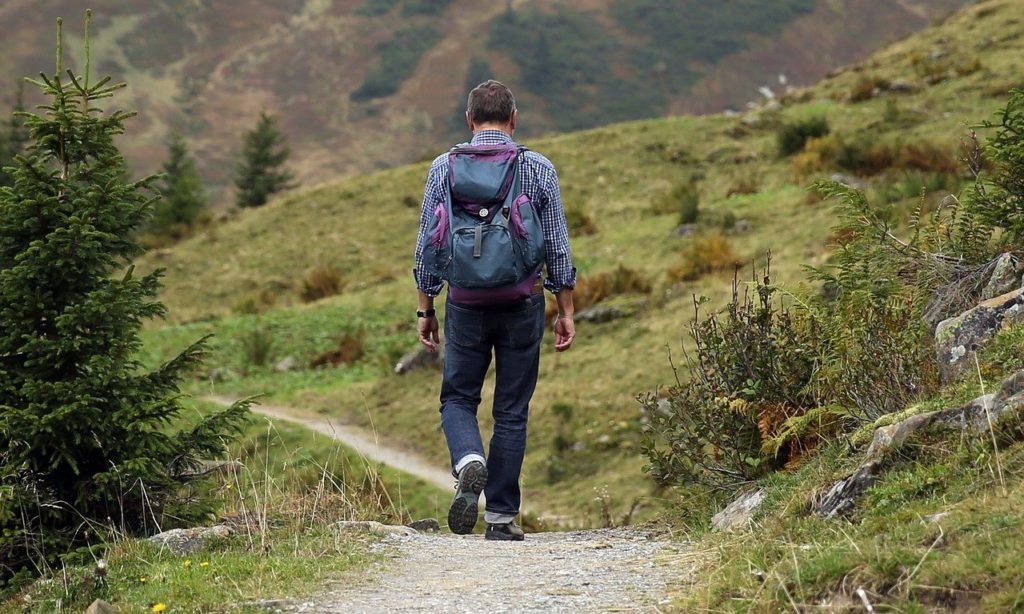
Trego Lake & Trego Nature Trails
The Trego Lake Trail is 3.6 miles and 3 loops. It offers hikers many scenic overlooks of Trego Lake. The area has a large population of white-tailed deer and ruffed grouse. Watch the ground for signs left by these animals.
The Trego Nature Trail is 2.8 miles. Hikers will see a beautiful forest and breathtaking views of the Namekagon River. Wildlife seen can include deer, fox, otters, wolves, and bobcat.

9. Pipestone National Monument
Our next historic site is a geologic wonder. At #9 on our list of the Best Minnesota Landmarks is the Pipestone National Monument.
Pipestone National Monument is located in Pipestone, Minnesota. The monument was established in 1937 to protect the sacred pipestone quarries, which have been used for centuries by Native Americans to make pipes used in religious and cultural ceremonies. The pipestone found at the quarries is a type of red claystone that is soft and easy to carve, making it ideal for pipe-making.
The monument covers about 367 acres and includes a visitor center that provides information about the history and significance of the pipestone quarries and the pipe-making tradition.
Visitors can also take a self-guided trail that leads to the quarries, where they can see the pipestone being quarried and watch demonstrations of pipe-making by Native American artisans.
A Sacred Site For Many Indigenous Tribes
The pipestone quarries have been a sacred site for many indigenous tribes for centuries and it is still considered sacred by many tribes. The quarry is open to visitors, but there are strict rules regarding the removal of pipestone.
Only enrolled members of federally recognized tribes can legally quarry pipestone and it is only allowed for traditional and religious use.
Pipestone National Monument is an important site that is significant to the history, culture and spiritual beliefs of many Native American tribes.
It’s a place where visitors can learn about the history and significance of the pipestone quarries and the pipe-making tradition, and witness the continuation of a cultural practice that has been passed down for centuries.

8. Cathedral of St Paul
Our next Minnesota landmark is known for its Shrine of Nations, forming a semicircle behind the altar. Each of its six chapels represents an ethnic group whose members contributed to the construction of the building; a statue of the patron saint is paired with a marble floor medallion representing the home country.
At #8 on our list of the Best Minnesota Landmarks is the Cathedral of St. Paul.
The history of the Cathedral of St. Paul dates back to the 19th century when the Catholic community in St. Paul desired a grand cathedral to serve as a spiritual and cultural center. In 1858, the first Catholic bishop of St. Paul, Joseph Crétin, laid the foundation for a small wooden church on the same site where the current cathedral stands.
As the Catholic community grew in St. Paul, plans were made for a larger and more impressive cathedral. Architect Emmanuel Louis Masqueray, known for his work on numerous ecclesiastical buildings, was chosen to design the new cathedral. Construction of the current structure began in 1906, and the cathedral was completed in 1915.
The Cathedral of St. Paul is designed in the Beaux-Arts architectural style, which combines classical and Renaissance elements. The exterior of the cathedral is made of Minnesota limestone and features a prominent dome inspired by St. Peter’s Basilica in Rome. The interior showcases exquisite stained glass windows, intricate mosaics, and ornate artwork.
It Was Consecrated On Palm Sunday
The Cathedral of St. Paul was consecrated on Palm Sunday, March 28, 1915. Over the years, the cathedral underwent several renovations and restorations to preserve its beauty and structural integrity. Notably, in the late 1990s, a major restoration project was undertaken to address aging infrastructure and restore the interior artwork to its original splendor.
The Cathedral of St. Paul is the mother church of the Archdiocese of St. Paul and Minneapolis. It serves as the seat of the archbishop and is a place of worship, prayer, and community gatherings. The cathedral has hosted numerous religious ceremonies, including ordinations, consecrations, and special liturgical events.
The Cathedral of St. Paul has become an iconic symbol of St. Paul and a popular tourist attraction. Its stunning architecture, rich history, and picturesque location atop Summit Hill attract visitors from around the world.
The cathedral offers guided tours for visitors to explore its beautiful interior, learn about its history and religious significance, and admire the intricate craftsmanship.

7. Mississippi National River & Recreation Area
Minnesota has some of the most magnificent scenic recreational areas in the U.S. Our next landmark is a case in point. At #7 on our list of the Best Minnesota Landmarks is the Mississippi National River & Recreation Area.
The Mississippi National River and Recreation Area was established in 1988 as a unit of the National Park Service.
The park stretches 72 miles along the Mississippi River in Minnesota, from the cities of Dayton and Ramsey to just downstream of the Minneapolis-St. Paul metropolitan area.
The park was created to preserve and protect the Mississippi River and its associated resources, and to provide recreational opportunities for visitors. It also serves as a way to promote the river’s cultural and historic significance.
The park includes a variety of landscapes, such as bluffs, wetlands, and floodplains, as well as historic sites and recreational areas. It is also a designated National River and a part of the Mississippi National River and Recreation Area.
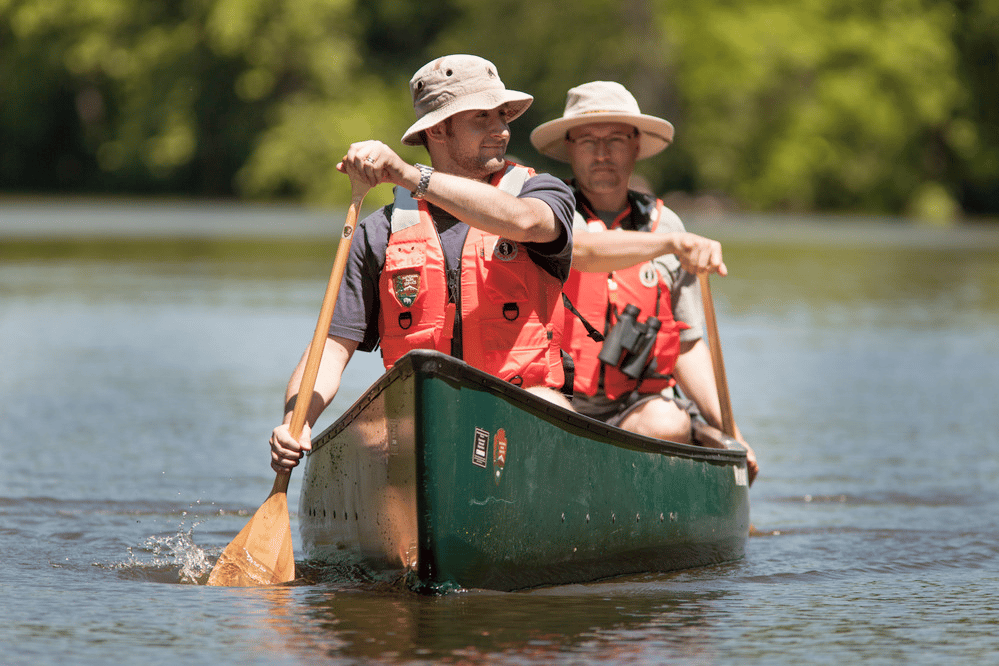
Things To Do
- Explore the park’s visitor centers: The park has several visitor centers where you can learn about the park’s history, geology, and wildlife.
- Go hiking: The park has several hiking trails that offer stunning views of the river and the surrounding landscape. Some popular trails include the Pike Island Loop, the Indian Mounds Trail, and the Fort Snelling State Park Trail.
- Go biking: The park has many miles of bike trails that are great for cycling enthusiasts.
- Take a boat tour: Several companies offer boat tours of the Mississippi River. These tours provide a unique perspective on the river and its surrounding landscape.
- Go fishing: The Mississippi River is home to a variety of fish species, including walleye, northern pike, and bass. Fishing is allowed in designated areas of the park.
- Go birdwatching: The park is home to a variety of bird species, including bald eagles, ospreys, and great blue herons. The park offers several birdwatching opportunities.
- Visit historic sites: The park is home to several historic sites, including Fort Snelling, the Mill City Museum, and the Guthrie Theater.
- Go picnicking: The park has several picnic areas where you can enjoy a meal with family and friends.
- Attend a ranger-led program: The park offers several ranger-led programs that are designed to educate visitors about the park’s natural and cultural resources.
- Go kayaking or canoeing: The park offers several water trails that are great for kayaking and canoeing. These water trails provide a unique way to experience the park’s natural beauty.
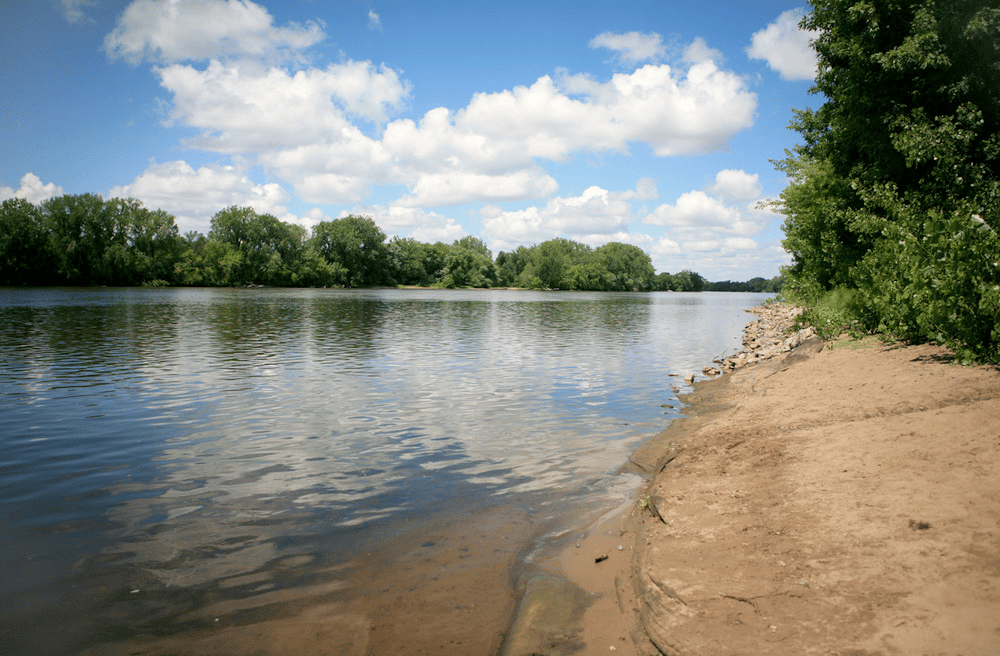
6. Grand Mound Historic Site
Our next Minnesota landmark is located along the Rainy River on the Canadian Border and is thought to have been constructed around 200 B.C. by the Laurel, an indigenous people about whom little is known. At #6 on our list of the Best Minnesota Landmarks is the Grand Mound Historic Site.
Grand Mound Historic Site is one of 25 National Historic Landmarks in Minnesota.
The largest of the five mounds is 25 feet high and 140 feet long. It is:
- Minnesota’s largest Native American earthwork
- the largest surviving “prehistoric” structure in the Upper Midwest
- the only effigy mound of this type in Minnesota
Some interpret the mound’s unique diamond shape and long “tail” to be a muskrat or serpent. While most mounds were built in high elevations, Grand Mound was built in a floodplain close to the Rainy and Big Fork Rivers.
Grand Mound Historic Site is part of a chain of more than 20 burial mounds that runs for 90 miles along the Canadian and U.S. sides of the Rainy River. (Source: Minnesota Historical Society)
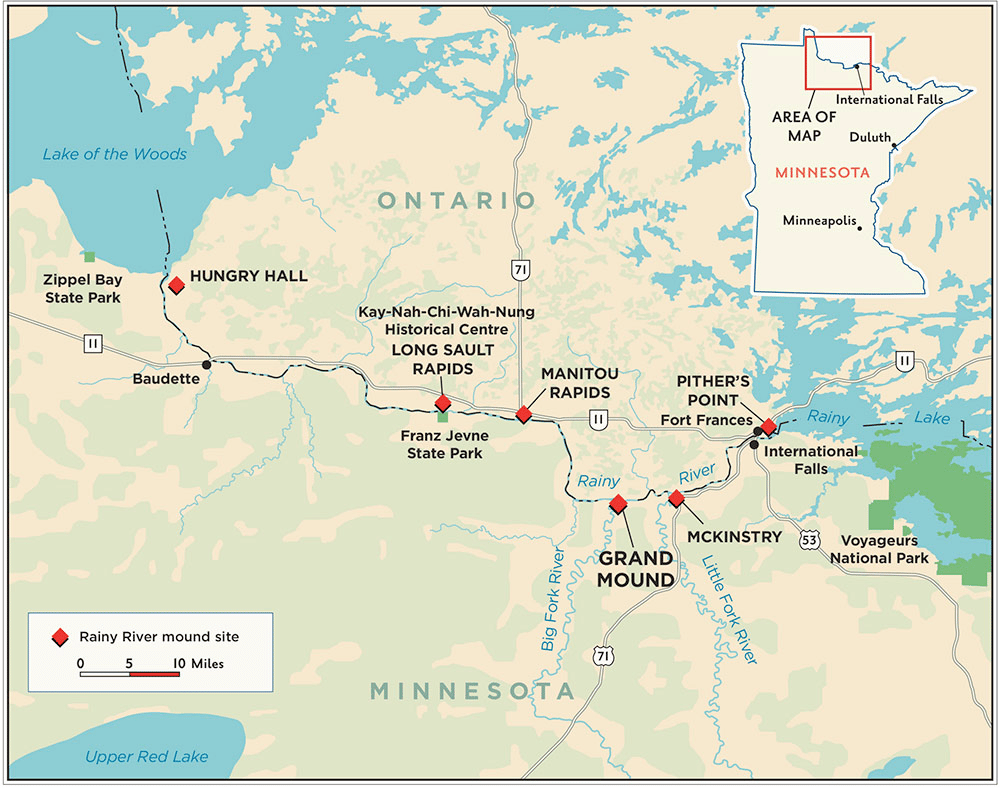
Top 5 Minnesota Landmarks
5. Sinclair Lewis Boyhood Home
We’re on to our list of the Top 5 Minnesota landmarks. At #5 is a historic house located in Sauk Centre, Minnesota. It was the childhood home of Sinclair Lewis, a Pulitzer Prize-winning novelist and one of the most important American writers of the early 20th century.
The house was built in 1883 by Lewis’s parents, Dr. Edwin J. Lewis and Isabel Warner Lewis. It is a two-story frame house with a gable roof, and features Victorian-style architecture.
Sinclair Lewis lived in the house from the age of six until he left for college in 1898. He later wrote about his childhood experiences in Sauk Centre in his novel “Main Street,” which was published in 1920 and became one of his most famous works.
The novel is set in a fictional Minnesota town that closely resembles Sauk Centre, and is considered to be a commentary on small-town life in America.
The Sinclair Lewis Boyhood Home was added to the National Register of Historic Places in 1971 and is now a museum open to the public. Visitors can tour the house and learn about Lewis’s life and works, as well as the history of Sauk Centre. It is also one of the main attraction of the city and is visited by many history enthusiasts.
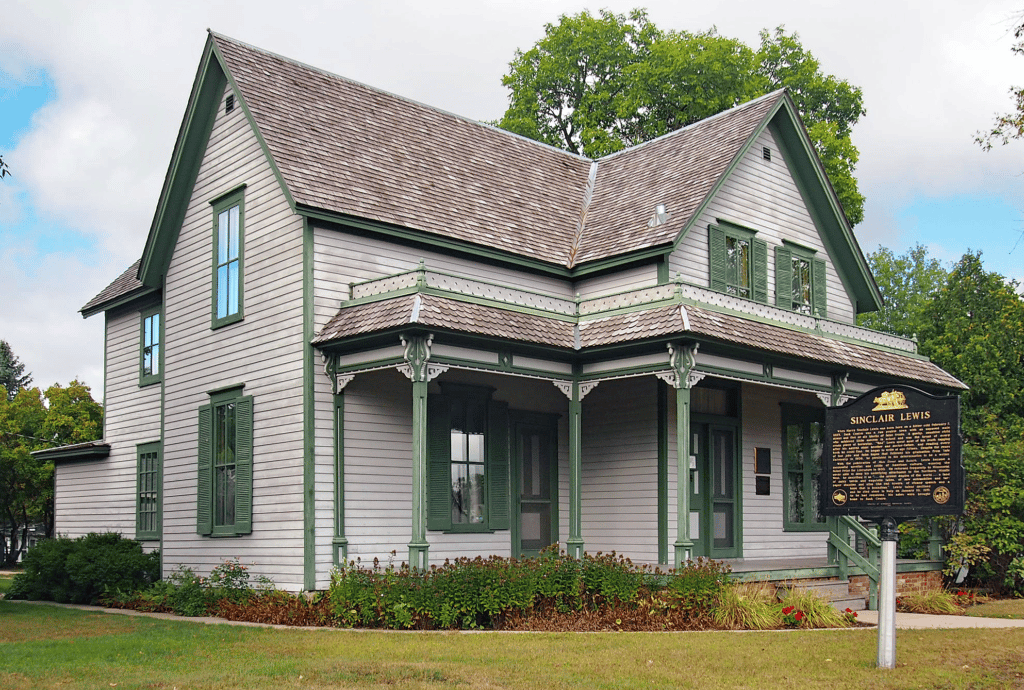
Take A Deeper Dive
Narrated guided tours are approximately 25 minutes long and take you through the restored turn-of-the-century home where Sinclair Lewis lived with his parents and brothers.
If you’re interested in learning more about this talented author then I recommend: Sinclair Lewis: Rebel from Main Street by Richard Lingeman.
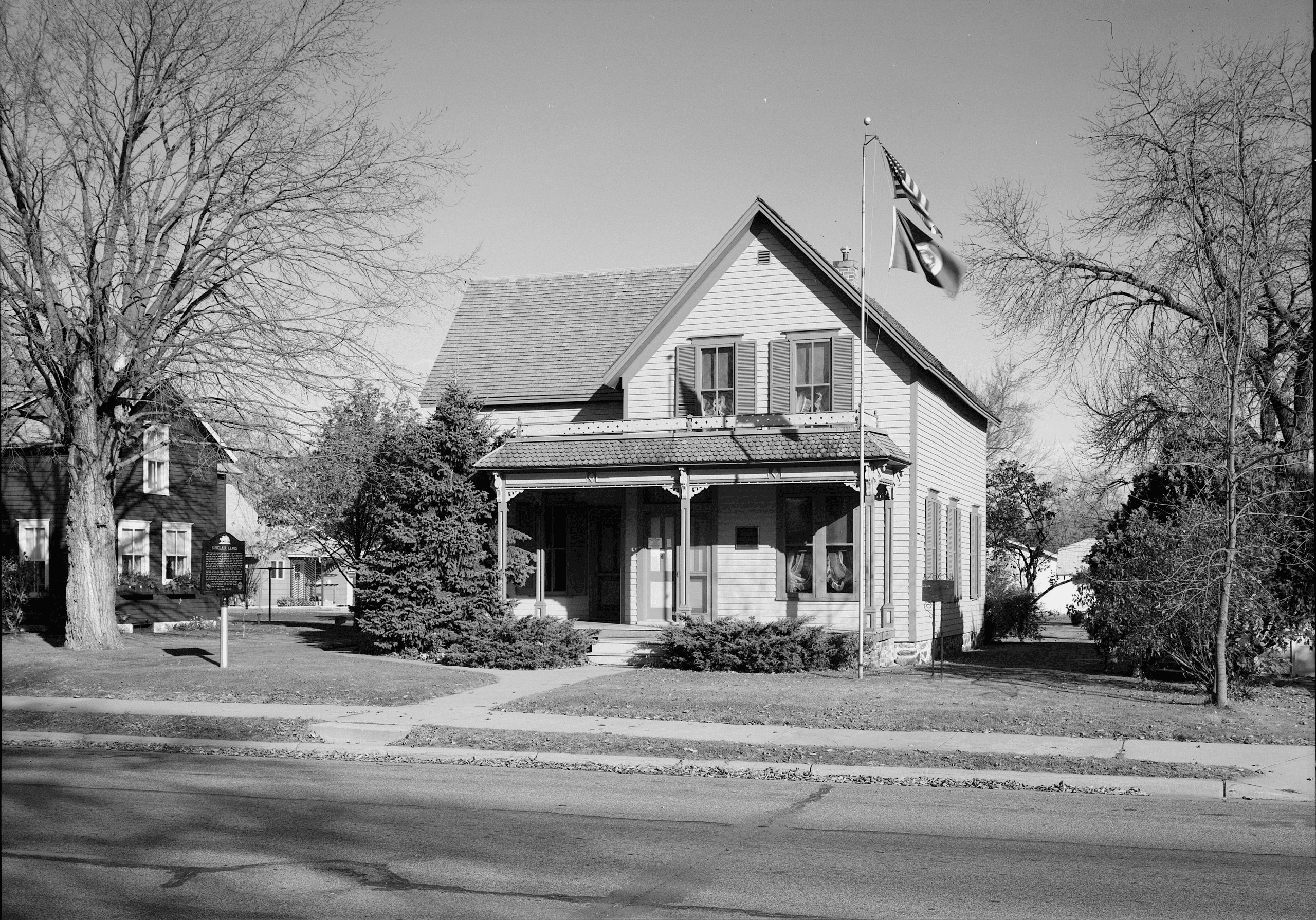
4. Fort Snelling
We’re on to our “Final Four” Minnesota landmarks.
If you love military history then you’ll enjoy our next site which is #4 on our list. Welcome to Fort Snelling. It’s a National Historic Landmark which resides on Dakota homeland, known as Bdote, with history spanning 10,000 years.
The fort was built in the 1820s and originally called Fort St. Anthony, after the falls just upstream on the the Mississippi. It was originally constructed as a military outpost to protect the region’s significant fur trade and, ultimately, had a role in the United States’ war with the Dakota people.
The Minnesota Historical Society now runs the fort, located atop a bluff along the river.
The Minnesota Department of Natural Resources runs Fort Snelling State Park, protecting the land at the bottom of the bluff.
Visitors to the site can learn the stories of the military fort and its surrounding area, which is home to a wide history that includes Native peoples, trade, soldiers and veterans, enslaved people, immigrants, and the changing landscape.

3. Grand Portage National Monument
We’re on to our final 3 landmarks. At #3 is the Grand Portage National Monument.
The Grand Portage National Monument is a historic site located in northeastern Minnesota. The monument commemorates the historic Grand Portage, which was a critical trade route used by Indigenous people and fur traders during the late 17th and early 18th centuries.
The Grand Portage trail was an important link between the Great Lakes and the interior of North America. It allowed traders to bypass the treacherous waters of Lake Superior and the Pigeon River, which marked the border between the United States and Canada.
The monument consists of a reconstructed fort, a stockade, and several other historic buildings. Visitors can explore the grounds and learn about the history of the fur trade, the life of the Ojibwe people, and the challenges faced by early settlers in the region.
One of the highlights of the monument is the Grand Portage National Historic Site, which includes a reconstructed trading post, a fur press, and a canoe warehouse. Visitors can watch demonstrations of traditional fur-trading activities, including the preparation of animal pelts and the loading and unloading of cargo.
The monument also includes several hiking trails, which allow visitors to explore the surrounding wilderness and enjoy stunning views of Lake Superior and the surrounding landscape.
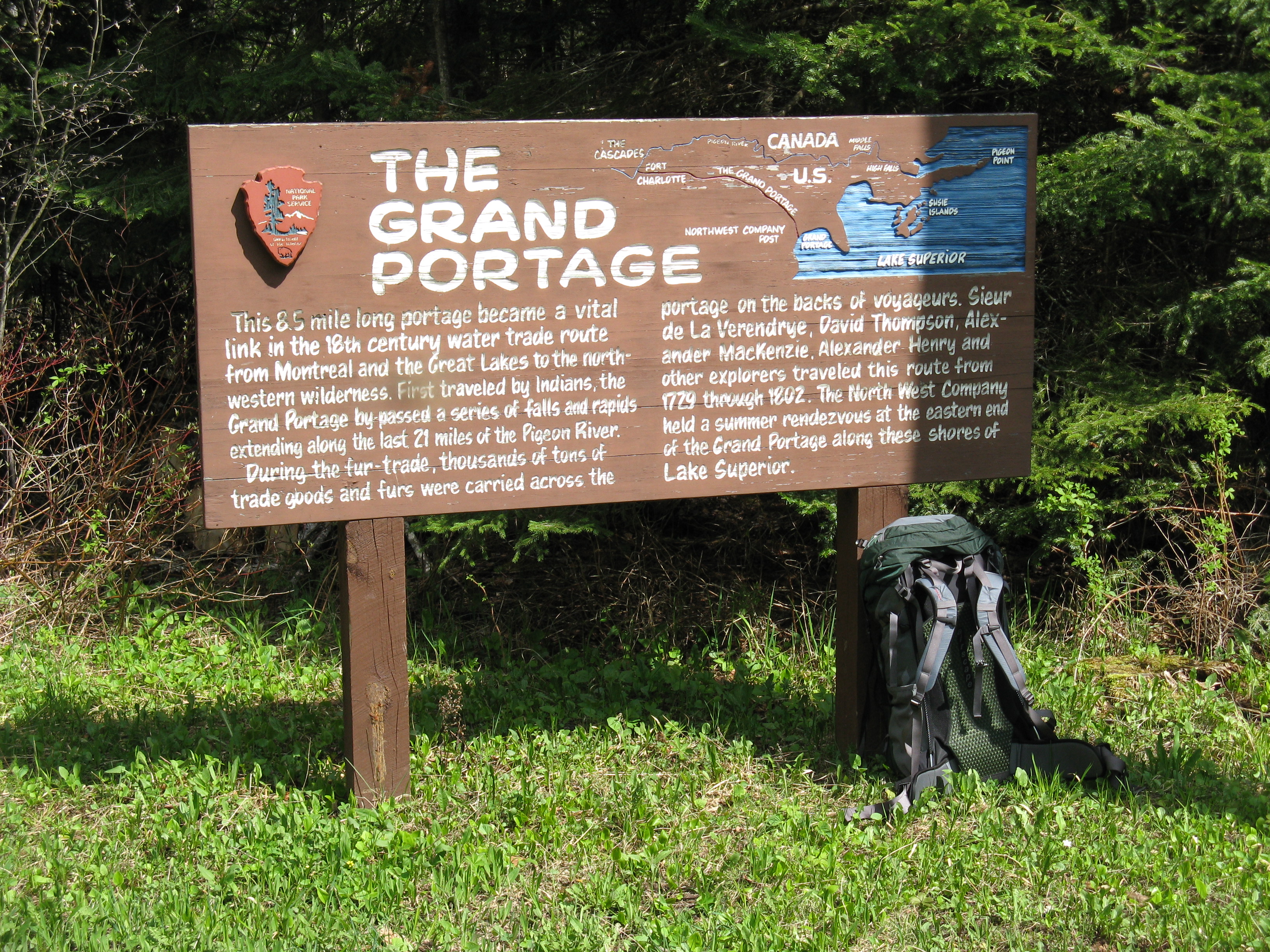
Things To Do
The monument preserves 710 acres which includes: the historic depot (71 acres) located on Lake Superior, the site of Fort Charlotte (98 acres) on the Pigeon River with the Grand Portage (541 acres) connecting the two depots. The 8.5 mile portage corridor and Fort Charlotte (639 acres) contain the majority of the Monument’s semi-wilderness setting.
There are some wonderful activities for visitors which include:
- Heritage Center and Historic Depot: It’s a great place to begin your adventure. There you can view exhibits about Anishinaabe (Ojibwe) culture and where you learn about a time when the fur trade dominated North American commerce.
- View One Of The Excellent Films On The Grand Portage Story: There’s a feature film (23 minutes) titled “Rendezvous With History A Grand Portage Story,” as well as shorter films which include: “Our Home: The Grand Portage Ojibwe,” “The Gift of the Birch Bark Canoe,” “A Gap in the Hills: Geography of Grand Portage,” and “The Men of the North West Company” – Running time for all four is 24 minutes.
- Visit The America’s National Parks Bookstore.
- Visit The Historic Depot: It includes three reconstructed post and sill log buildings and four outside areas.
- Hike The Mount Rose Loop Trail: Visitors will be treated to a stunning overlook of the historic depot, Grand Portage Bay, Mount Josephine, and the gap in the hills where the Grand Portage footpath goes.
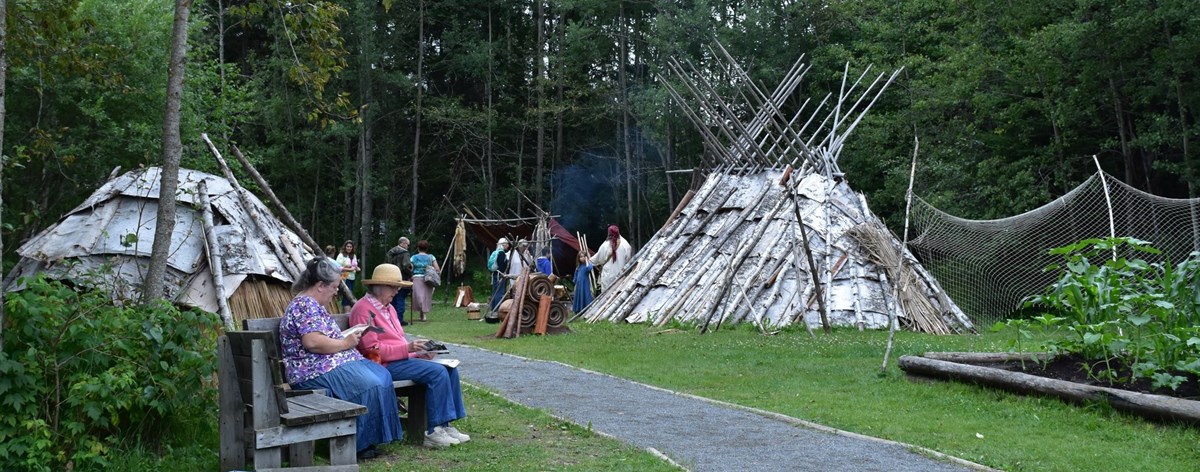
2. Mall Of America
Coming in at #2 on our list of the Best Minnesota landmarks is a place which features more than 520 stores, 60 restaurants, Nickelodeon Universe (a 7-acre indoor amusement park), SEA LIFE Aquarium, a comedy club, world-class gaming and entertainment centers, the LEGO Store, mini-golf and tons of other family attractions and nightlife options. Welcome to the Mall of America.
The Mall of America is a renowned shopping and entertainment complex located in Bloomington, Minnesota. It is one of the largest malls in North America and a popular tourist destination. Here’s a description of the Mall of America:
It spans an impressive area of approximately 2.8 million square feet, making it one of the largest malls in the world. The mall consists of four main levels and is divided into East, West, and North sections. It features more than 500 stores, making it a shopaholic’s paradise. The mall’s design is efficient and well-organized, with a central atrium that allows visitors to easily navigate between different areas.
The Mall of America offers a vast array of stores, ranging from well-known international brands to unique specialty shops. It features flagship stores of major retailers like Macy’s, Nordstrom, and Best Buy. Visitors can find a wide range of products, including clothing, electronics, home goods, jewelry, cosmetics, and more. The mall caters to various budgets and tastes, ensuring there’s something for everyone.

Mall of America | Courtesy of Wikimedia Commons
There Are Entertainment Options Too
Beyond shopping, the Mall of America offers a wealth of entertainment options, making it a destination for both locals and tourists. One of the most notable attractions is Nickelodeon Universe, an indoor amusement park featuring thrilling rides and attractions based on popular Nickelodeon characters. The park includes roller coasters, a Ferris wheel, a carousel, and numerous other rides suitable for all ages.
Additionally, there is SEA LIFE Minnesota Aquarium, an underwater world showcasing an incredible variety of marine life. Visitors can explore interactive exhibits, walk through a tunnel surrounded by sharks, and learn about marine conservation.
The mall is also home to the Crayola Experience, a creative and interactive attraction where children can immerse themselves in hands-on art activities. It offers various stations, including coloring, painting, and sculpting, allowing kids to unleash their creativity.
Other amenities and entertainment options include a 14-screen movie theater, mini-golf courses, a mirror maze, escape rooms, a LEGO store, a flight simulator, and numerous dining options.
It also boasts a diverse range of dining options, including fast food, casual eateries, and upscale restaurants. Visitors can find international cuisine, popular chains, local favorites, and gourmet establishments within the mall. Whether you’re looking for a quick bite or a sit-down meal, there are numerous options to satisfy every palate.
The Mall of America offers much more than just shopping. It provides a comprehensive experience where visitors can shop for their favorite brands, indulge in delicious food, enjoy thrilling rides and attractions, and explore interactive exhibits. The mall’s sheer size and variety of offerings ensure there is something for everyone, making it a popular destination for locals and tourists alike.

1. Voyageurs National Park
As the #1 Minnesota landmark, More Than Just Parks has selected Voyageurs National Park.
From kaleidoscopic sunrises and sunsets mirrored on glassy waters of its lakes to some of the most spectacular displays of the northern lights you’ll find anywhere on earth, Voyageurs National Park is a true monument to the wonders of nature.
If you’re wondering how challenging it is to visit Voyageurs given that it’s almost exclusively accessible by boat – don’t!
The area has countless lodges and outfitters that will rent you any kind of boat you could want from a canoe on up to a houseboat at very reasonable prices.
The park is extensively mapped and easy to navigate once out on the waters. Trust me, you won’t want to miss out on an unforgettable experience because you’re unfamiliar with boating.

The History of Voyageurs National Park
Voyageurs National Park has a rich history of human habitation and culture. The area has long been home to the Ojibwe people who made their lives in this harsh, yet bountiful environment. Native Americans called this place home for thousands of years, fishing, hunting, and traveling the lakes in birch bark canoes.
The first Europeans to arrive were early trappers and fur traders known as Voyageurs. These Voyageurs were French Canadians who transported furs using canoes. It was these early frontiersmen for whom the park was named.
Later the park experienced a brief gold rush and a logging boom before finally becoming the recreation paradise it is today. You can read more about the park’s history on their website here.
Save The Boundary Waters
Right now Voyageurs National Park and the Boundary Waters face the threat of permanent despoilment from mining interests looking to exploit the area for metals located beneath the lakes and rivers, namely the Twin Metals Mine.
You can do your part to help save this precious wild area by visiting or donating to Save The Boundary Waters here.
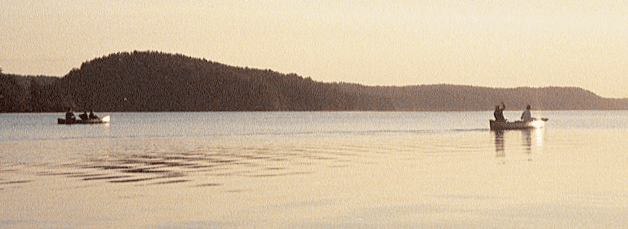
Best Things To Do At Voyageurs
1. Paddle in a Canoe

Canoes are the historic mode of transportation in this area and slowly plying the waters of the park’s lakes in a canoe can help give you a fuller appreciation of this unique north woods environment.
“There is magic in the feel of a paddle and the movement of a canoe, a magic compounded of distance, adventure, solitude, and peace.”
-Sigurd Olson
2. See the Northern Lights
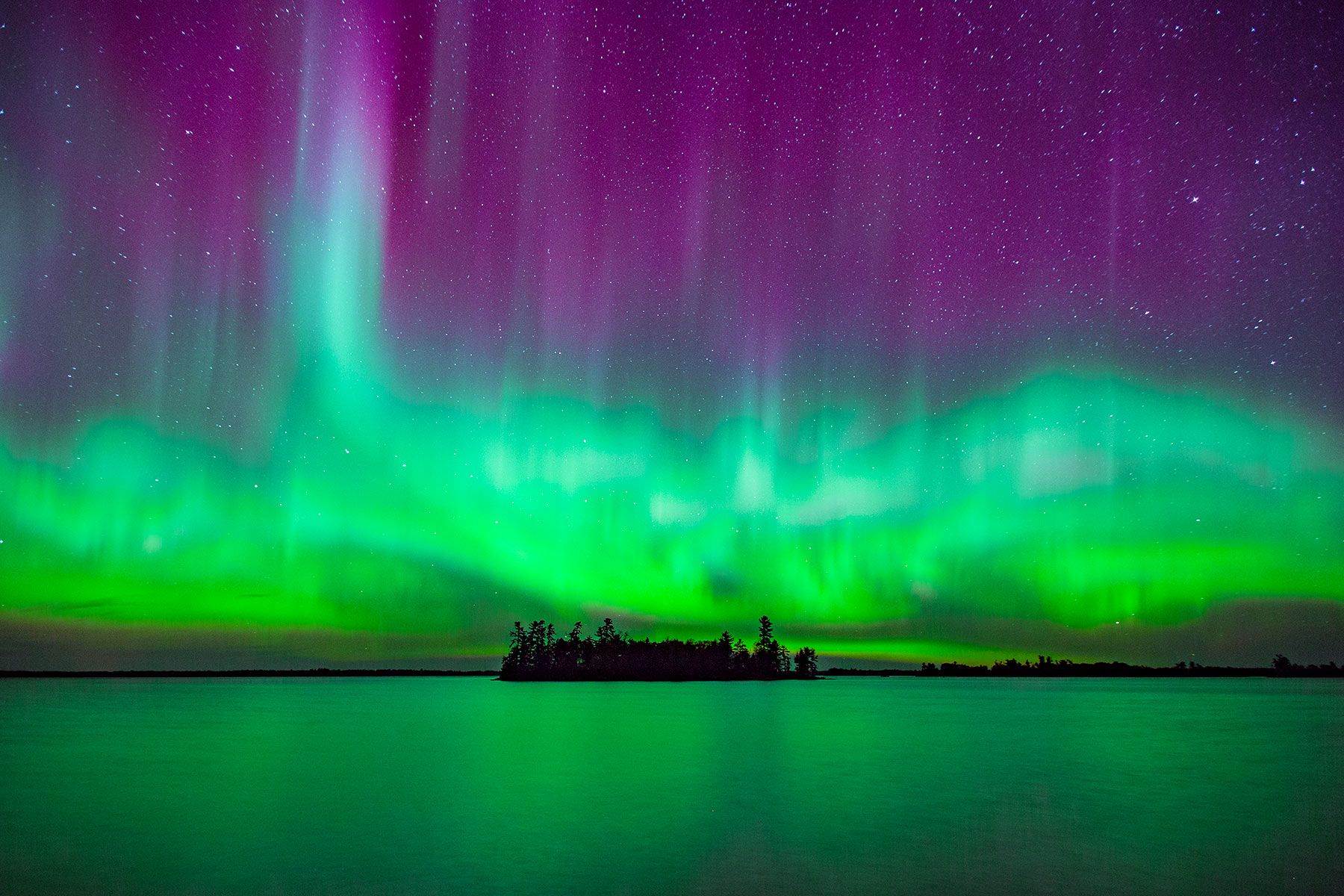
On clear nights in Voyageurs you can see one of the most spectacular light shows in the world, the northern lights. They start as a faint glow on the horizon before working their way up the sky, dancing in real time right before your eyes.
Here in the remote north woods there is almost no light pollution whatsoever and the night sky is truly a wonder to behold.
There’s no need to go to Iceland or Norway or even Alaska if it’s the northern lights you seek, you’ll find them here in all of their glory.
Fall and winter give you your best chances of seeing the northern lights, but you may be lucky enough any time of year if the conditions are right.
3. Explore Ellsworth Rock Gardens
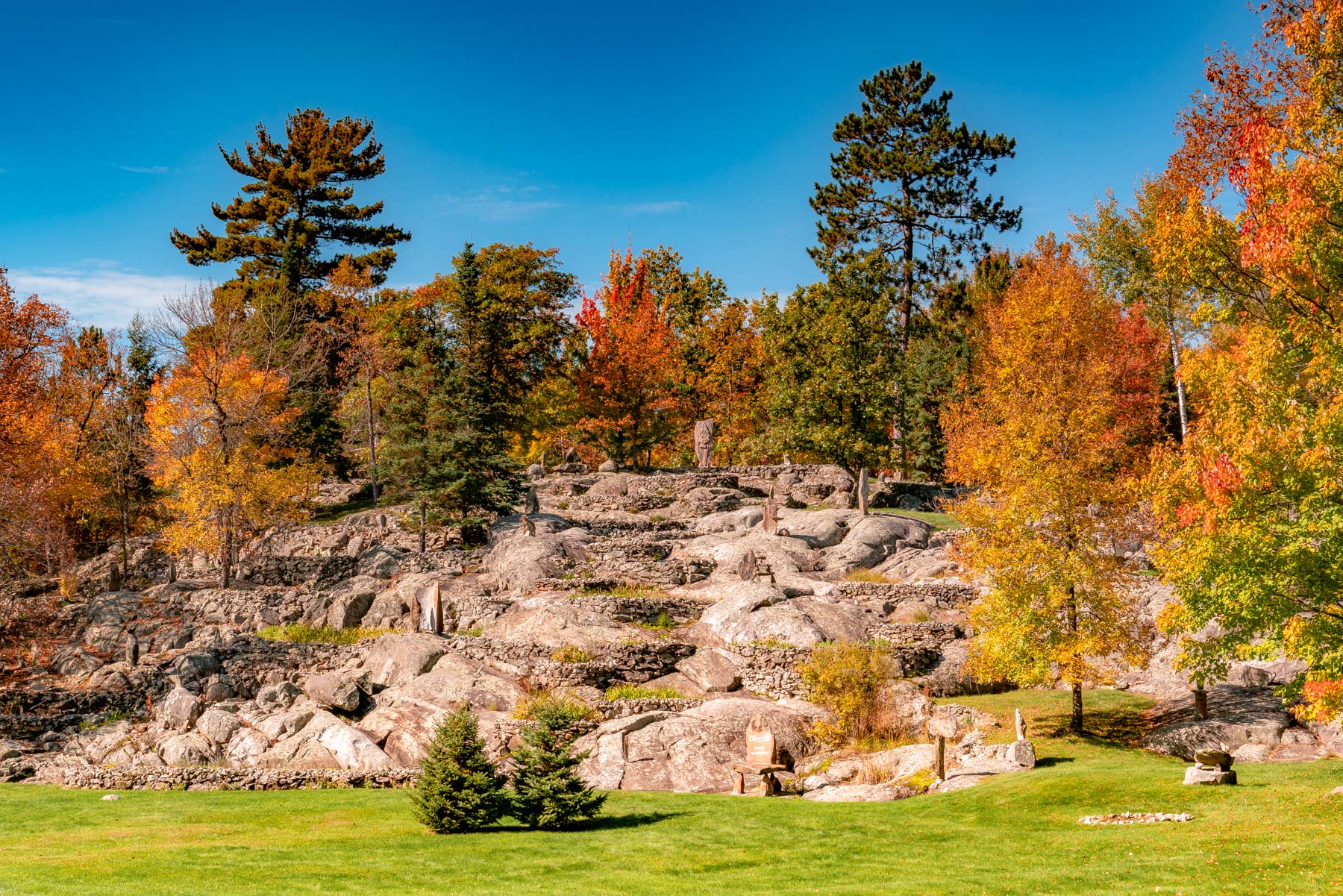
This incredibly unique garden features countless works of art made entirely out of stone. Some of the stones are massive monoliths balanced delicately upon other stones.
This incredible attraction is entirely the work of one man, a humble carpenter from Chicago named Jack Ellsworth, who built these amazing works of art over the course of 20 years starting in the 1940’s.
Tie off your boat here along the shores of Lake Kabetogama and explore the fascinating artistic expressions of one determined man.
4. Go Fishing
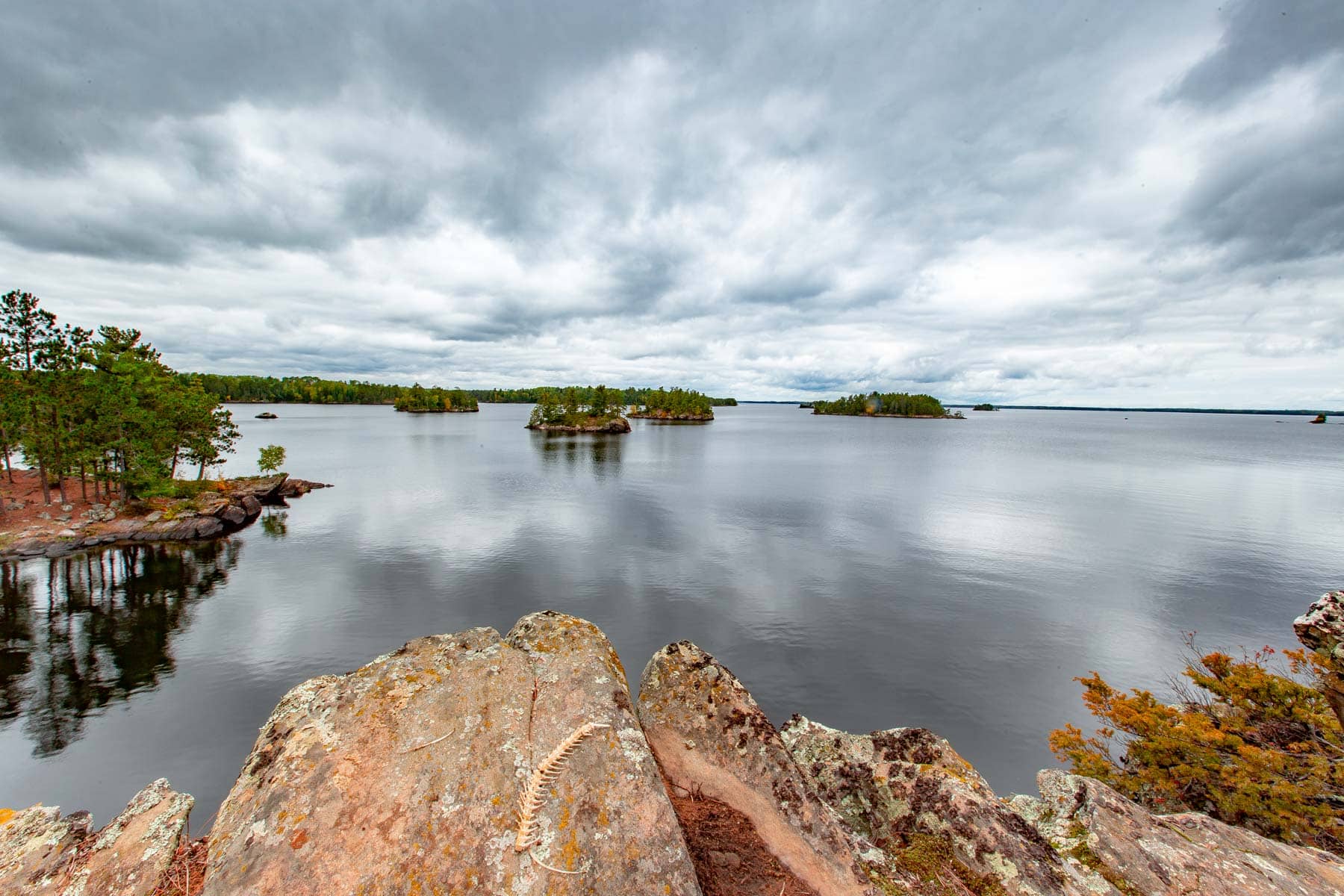
The waters of Voyageurs National Park and the surrounding areas are teeming with native fish that are great for eating or just for sport.
There’s nothing quite like the feeling of catching your own meal and cooking it over an open fire on an island all to yourself.
Be sure to follow NPS and Minnesota DNR rules governing fishing in the area and fish responsibly.
5. Go Camping On Your Own Island
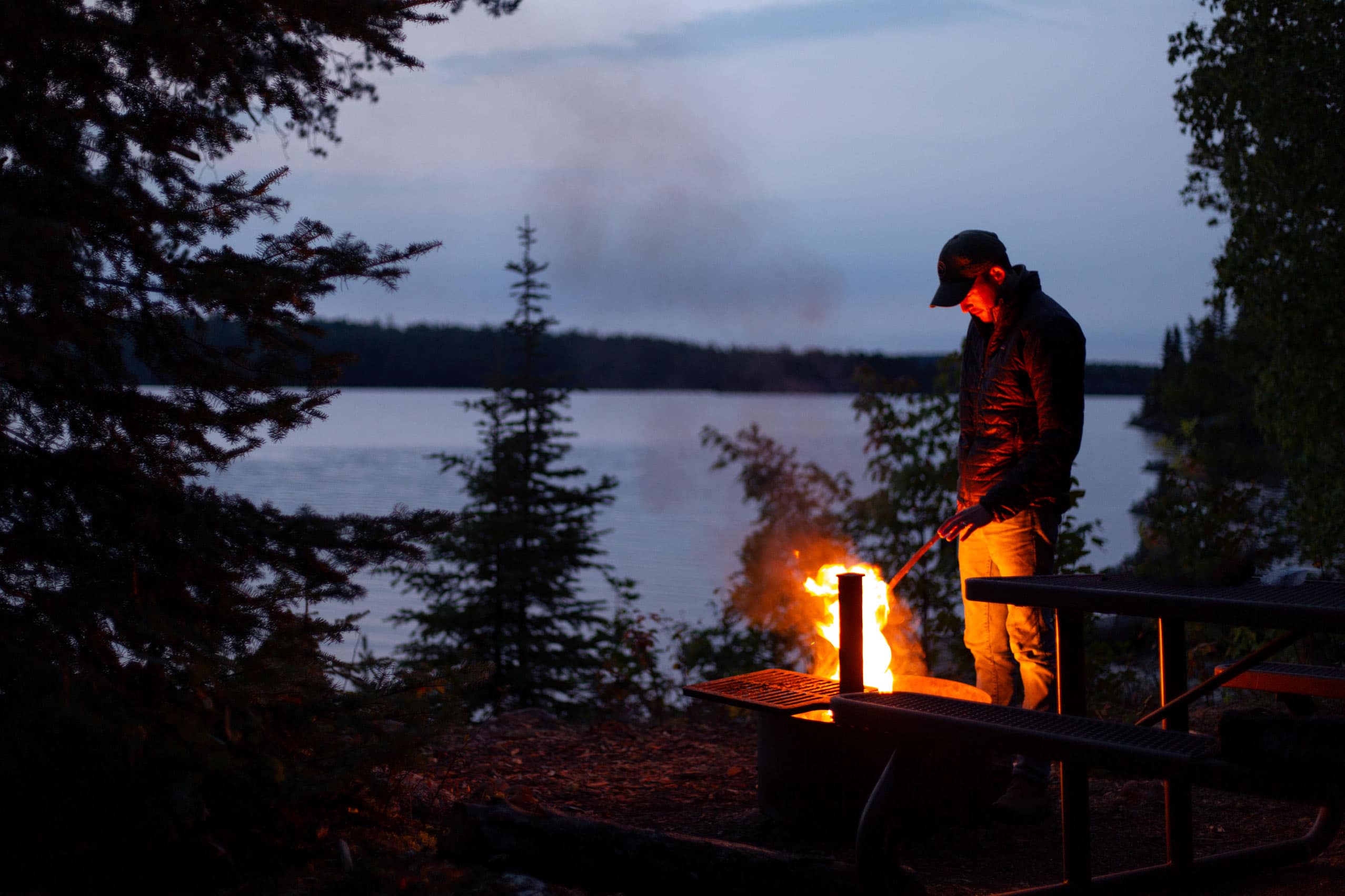
In Voyageurs there are no campgrounds with sites plotted next to each other one after the other with whirring RV generators, yelling kids, and barking dogs.
In this one-of-a-kind national park every campsite is all to itself, and yes, some are even on their own entire island. Did I mention there are over 150 campsites?
Watch our Award-Winning Voyageurs Film
This film is the culmination of several weeks spent in the northernmost region of Minnesota known as Voyageurs National Park. Encompassing more than 340 square miles, Voyageurs is a watery wonderland almost exclusively accessible by boat.
Journey with us as we explore a land blanketed in pristine lakes, erupting with kaleidoscopic fall colors, and home to the most spectacular displays of the northern lights on the planet. This is Voyageurs. Filmed primarily in stunning UHD 8K.
If you plan on visiting the park be sure to check out boat rentals in the area! One cool feature of the park is that there are no traditional campgrounds, only individual campsites constructed so that no one is visible from another.
We chose to shoot this film in the Fall because of the unbelievable display of fall foliage that can be seen here each year. Perhaps the coolest feature of this park is only visible after the sun goes down. Voyageurs is recognized as one of the best places to view the Northern Lights in the world.
Map Of Minnesota Landmarks
List Of Minnesota Landmarks
- Voyageurs National Park
- Mall of America
- Grand Portage National Monument
- Fort Snelling
- Sinclair Lewis Boyhood Home
- Grand Mound Historic Site
- Mississippi National River & Recreation Area
- Cathedral of St Paul
- Pipestone National Monument
- Saint Croix National Scenic Riverway
- Split Rock Lighthouse
- F. Scott Fitzgerald House
- Mayo Clinic
- Charles A. Lindbergh House
- Rabideau CCC Camp
- James J. Hill House
- William A Irvin Museum
- Stone Arch Bridge
- Mill City Museum
- Minnesota State Capitol
Why Trust Us About Minnesota Landmarks?
We’re Jim Pattiz and Will Pattiz, collectively known as the Pattiz Brothers and we absolutely LOVE the national parks.
You should probably know that we don’t just make this stuff up out of thin air. We’ve spent our entire adult lives exploring and filming America’s national parks and public lands.
We’ve worked with the National Park Service, the Department of Interior, USDA, U.S. Forest Service, and more for years creating films on important places and issues. Our work has been featured in leading publications all over the world and even some people outside of our immediate family call us experts on the national parks.
And, in 2018, our father – having spent a lifetime teaching history – joined us so that he could help us to tell the stories behind these amazing places.
Meet The Parks Brothers
We Hope You’ll Follow Our Journey

Our goal here at More Than Just Parks is to share the beauty of America’s national parks and public lands through stunning short films in an effort to get Americans and the world to see the true value in land conservation.
We hope you’ll follow our journey through the parks and help us to keep them the incredible places that they are. If you’re interested in joining the adventure then sign up below!
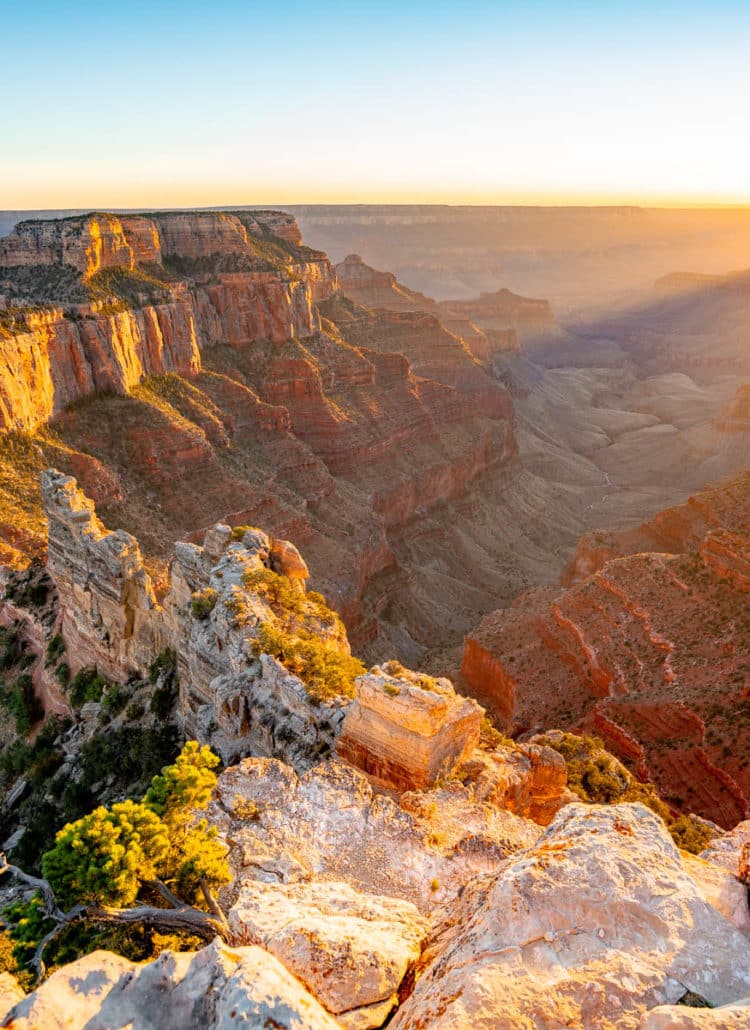
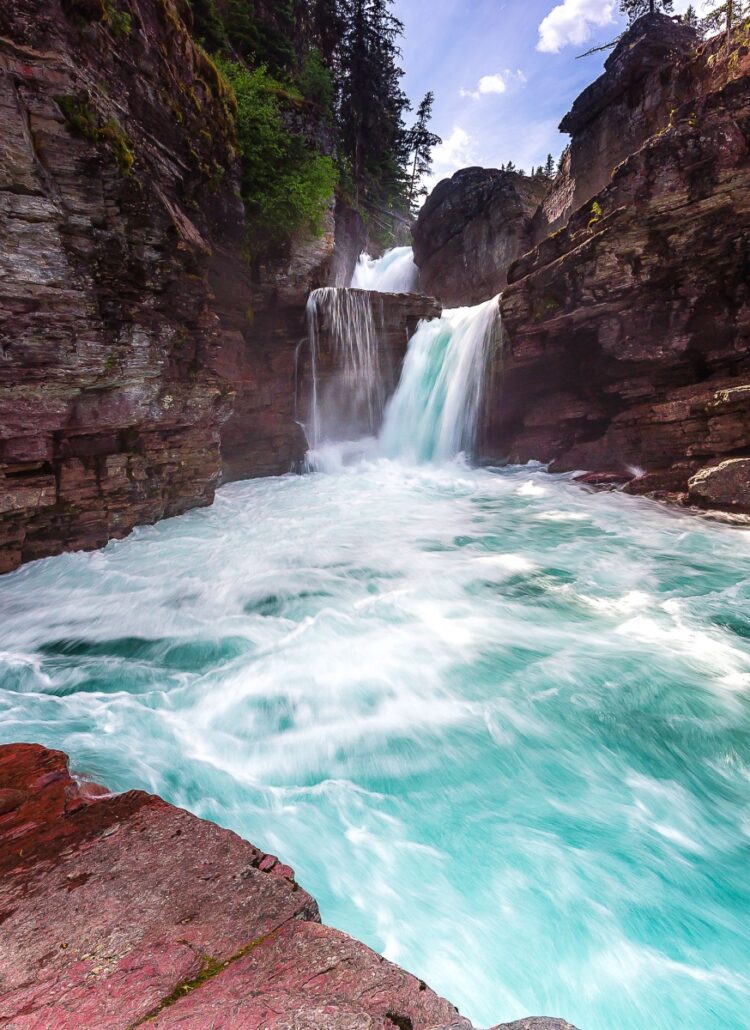
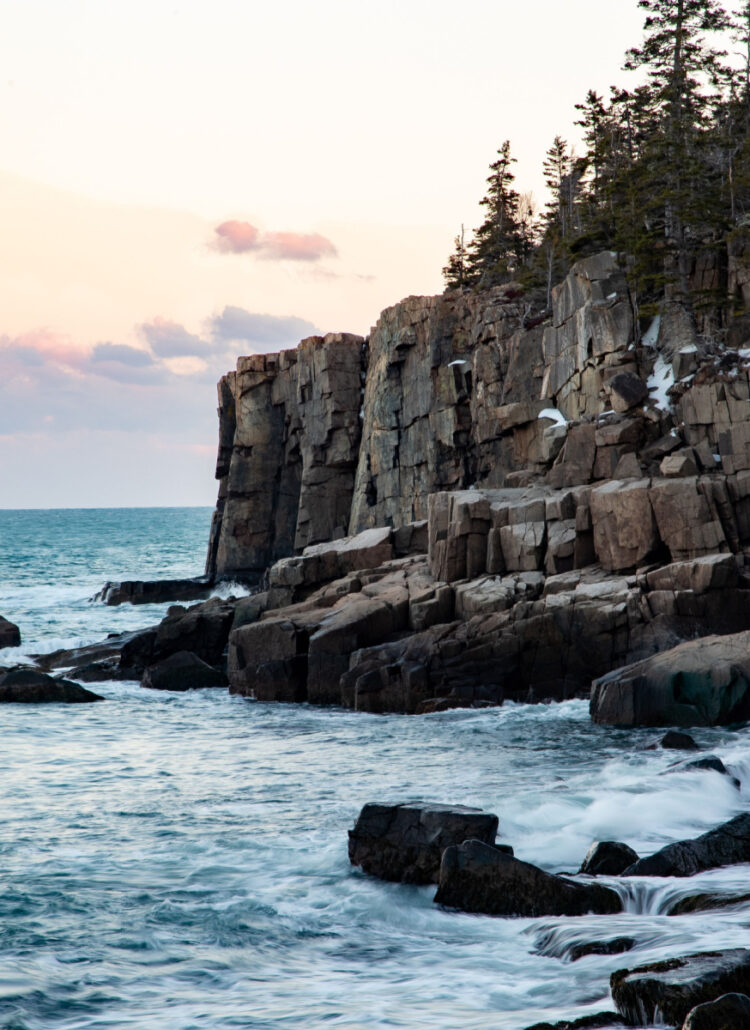
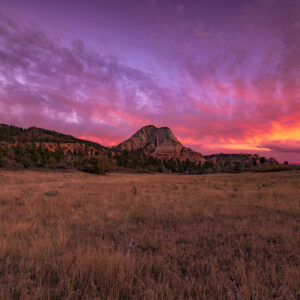

Leave a Reply